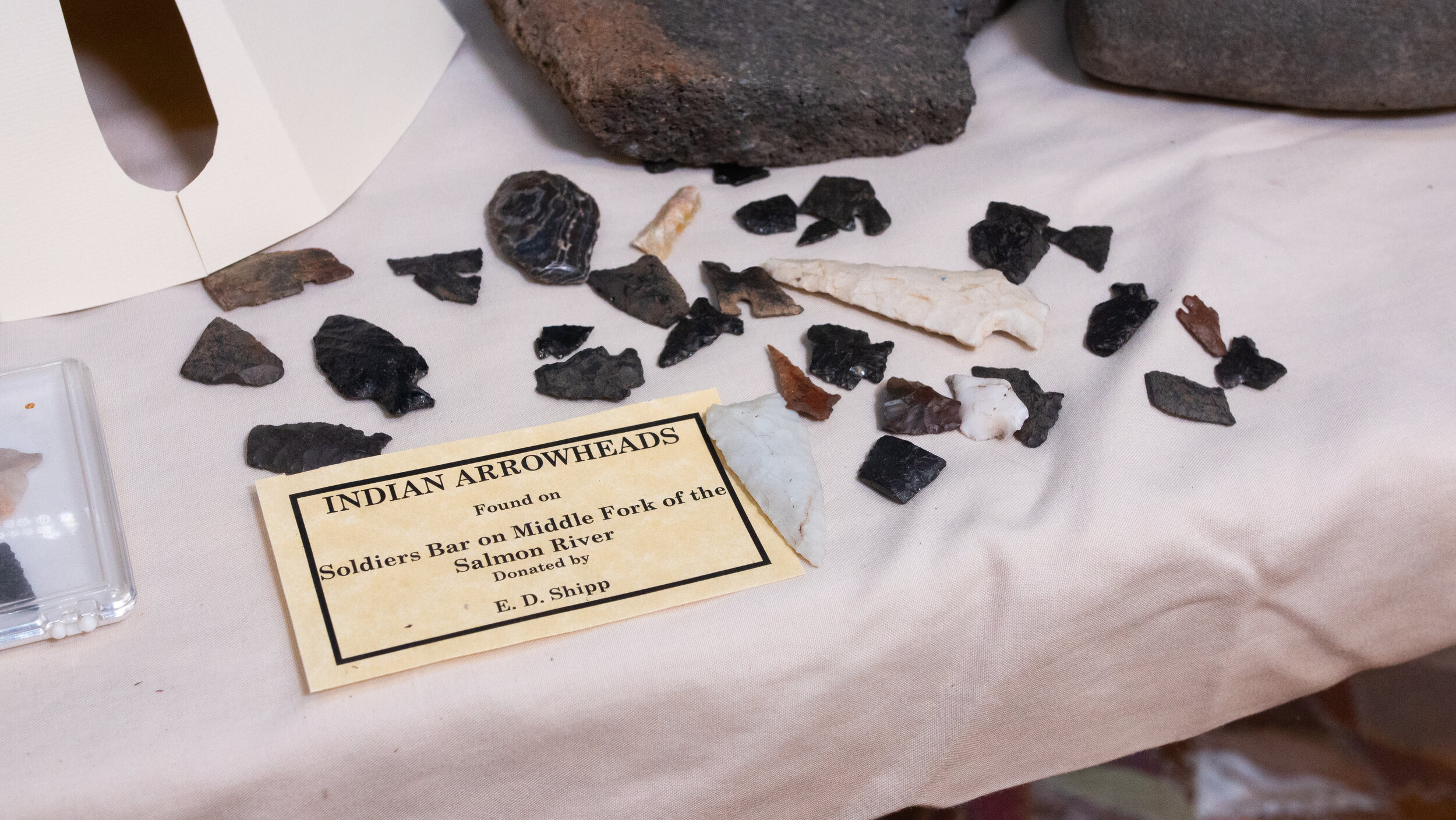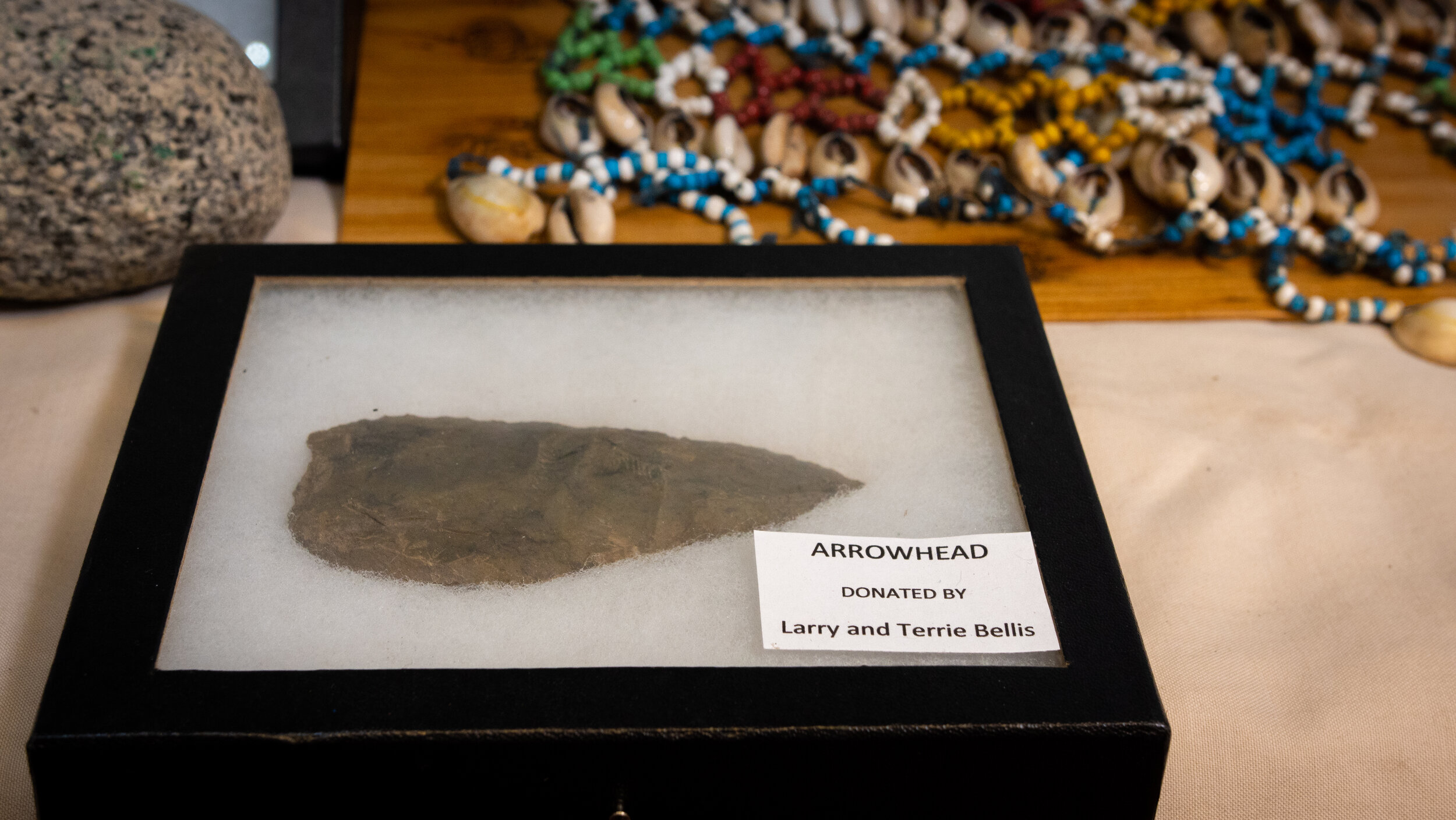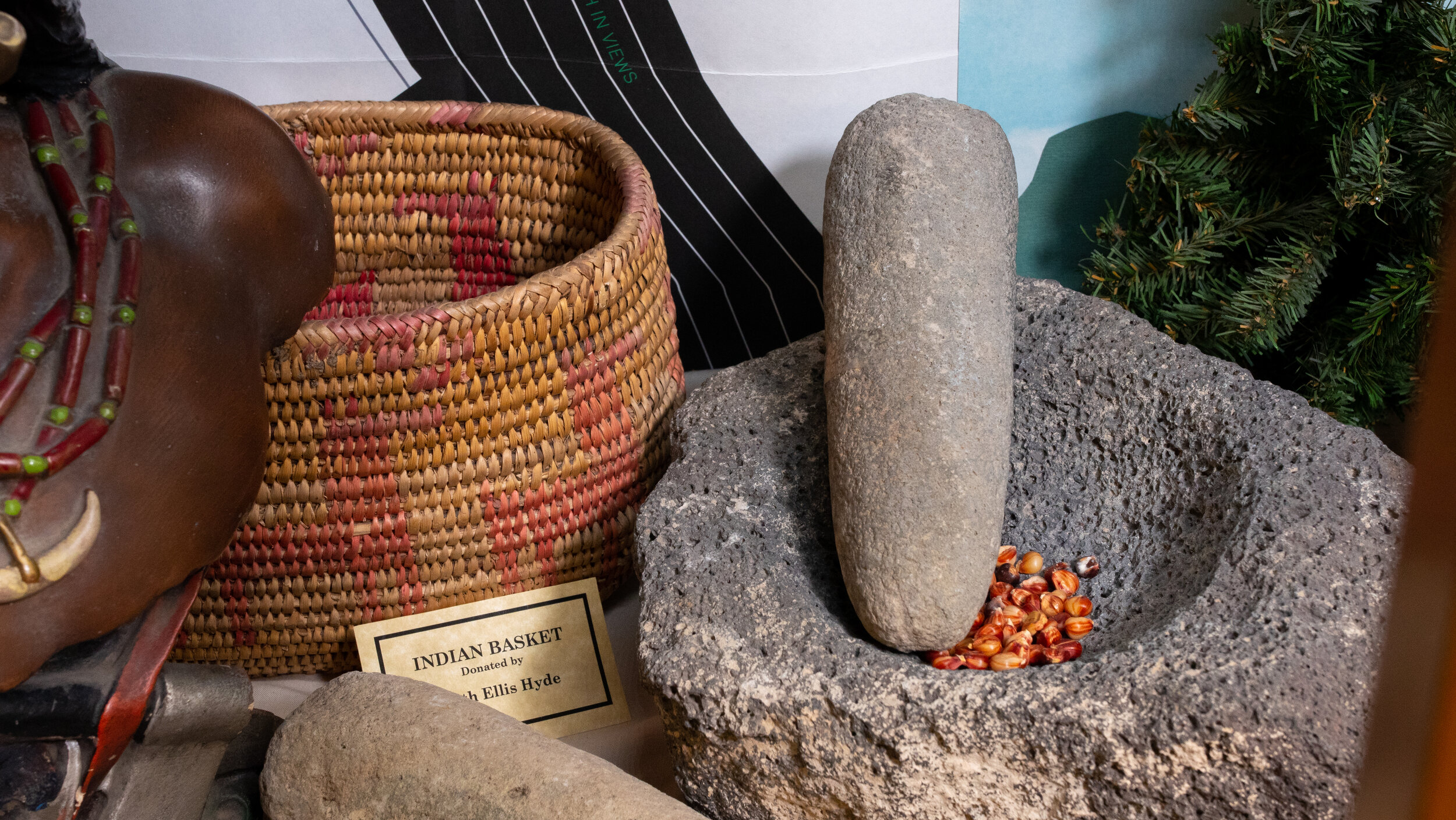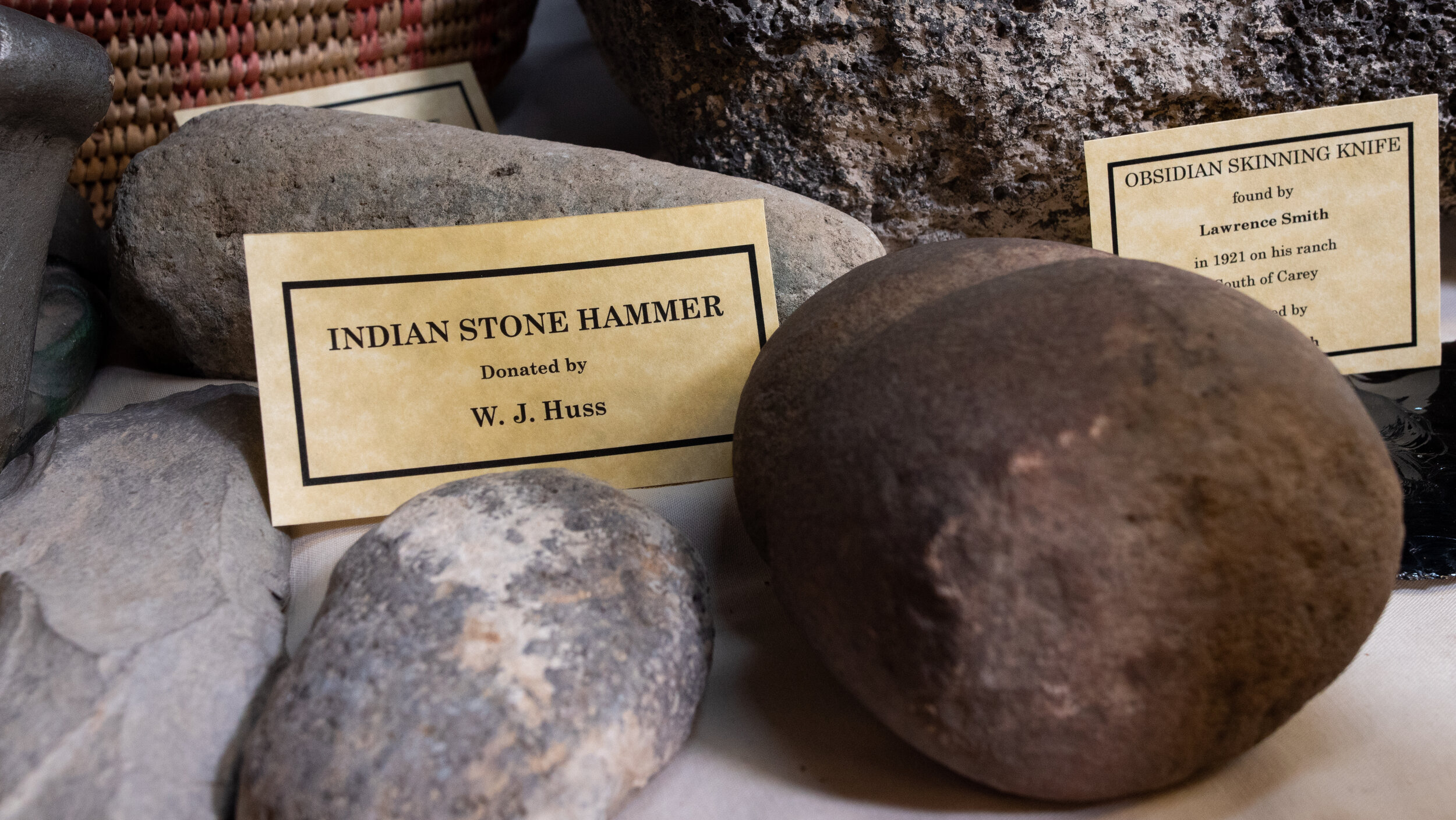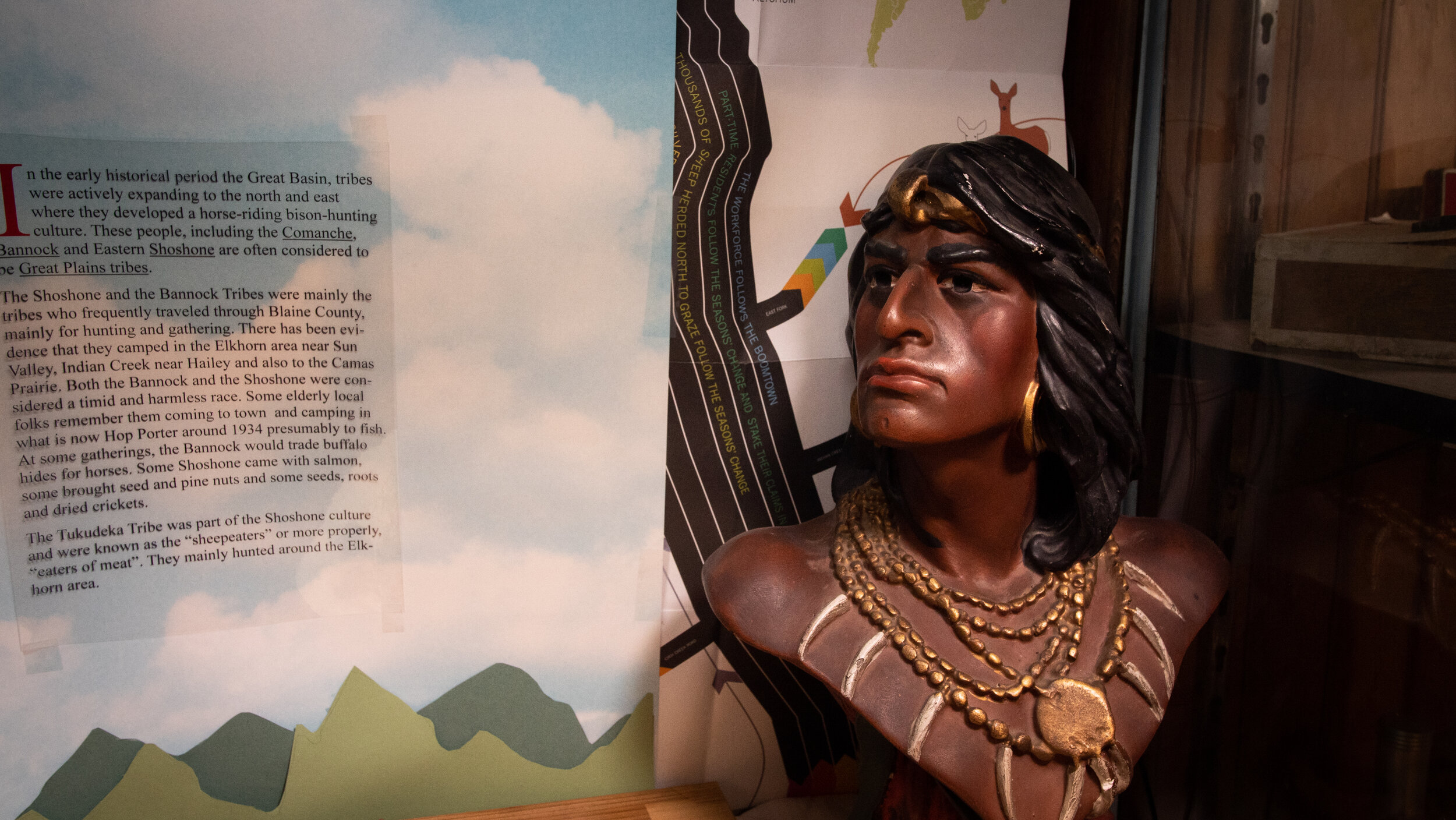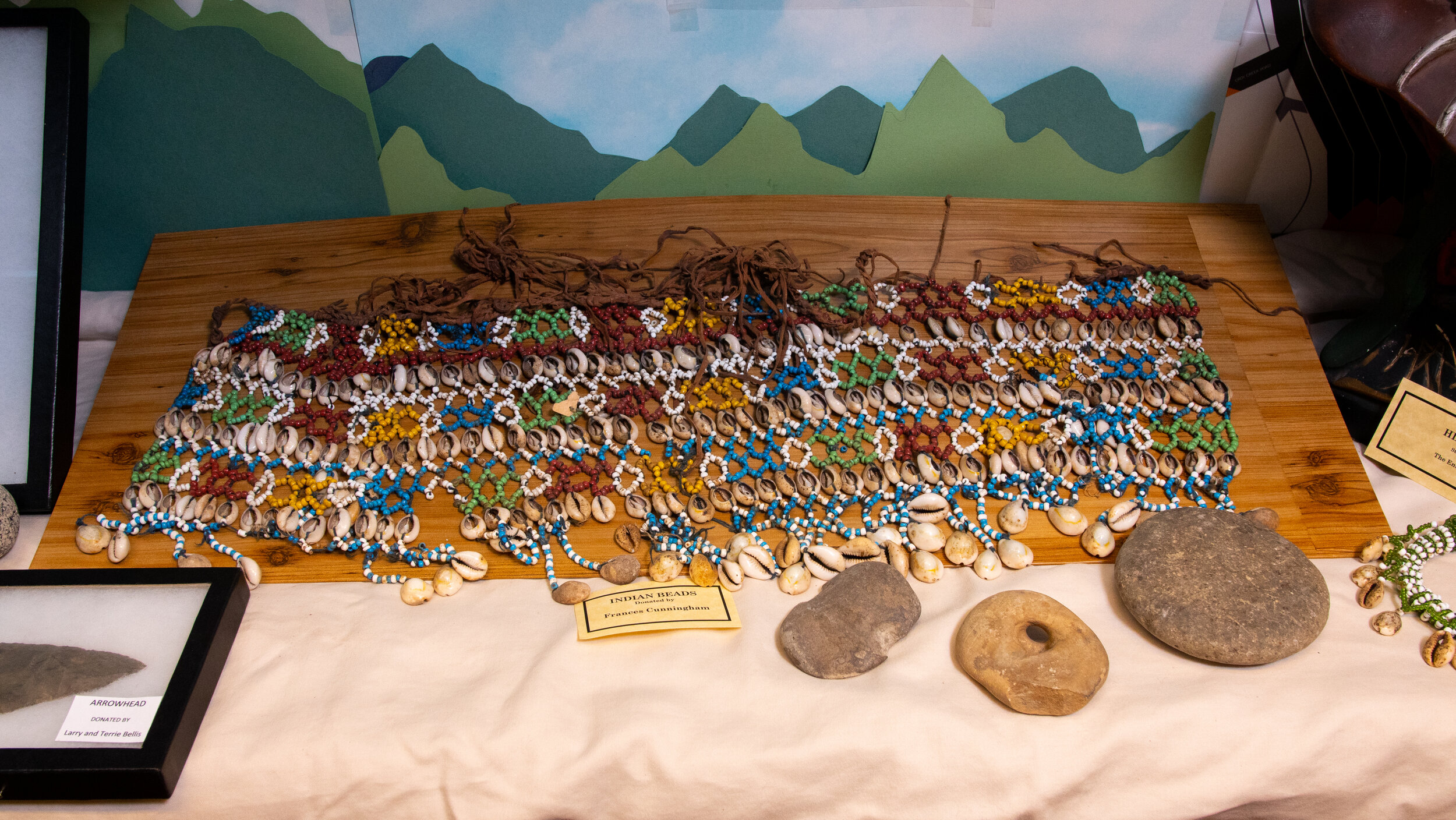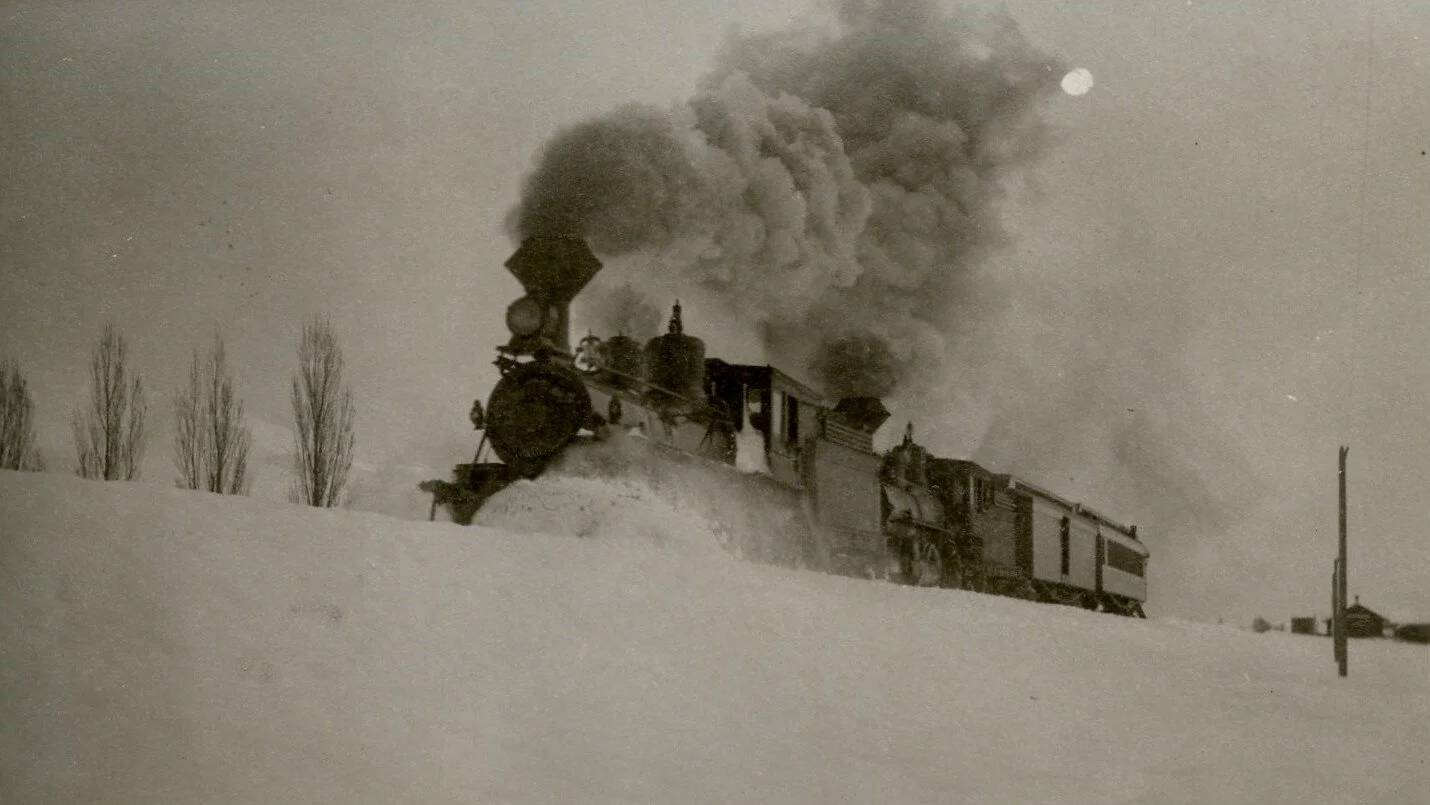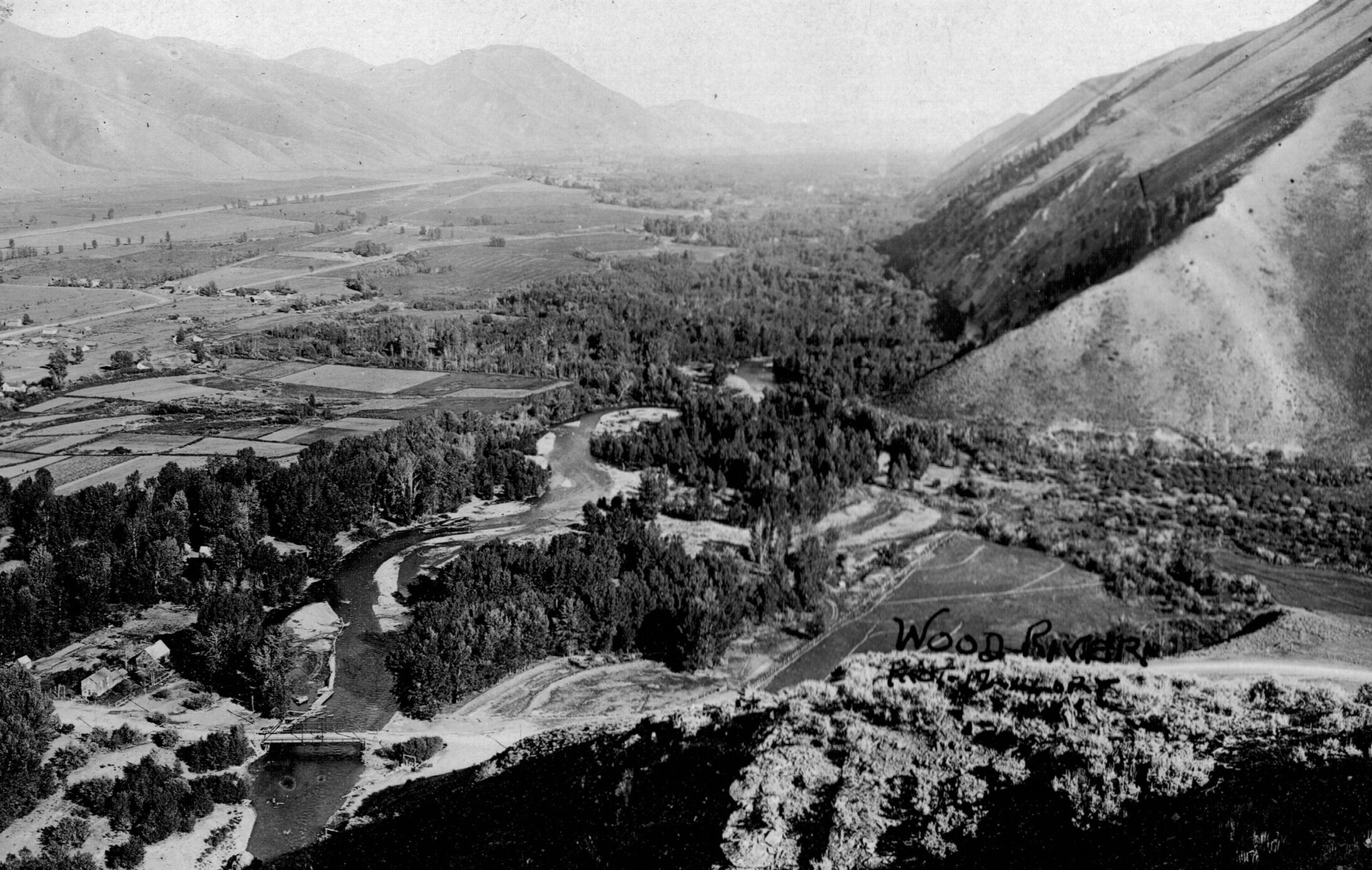
VISIT
Opening Season
Memorial Day through October 31st
Opening Hours
Monday through Saturday 11:00-5:00 | Sunday 1:00-5:00
Admission: Free, Donations Welcome
If you would like to schedule a museum tour outside opening hours or season, please
Contact Us at 208-788-1801 or email us at bchistoricalmuseum@gmail.com.
OR
You may call Bob MacLeod at 208-788-4210
If you are with an education group, and would like information on school tours, please visit our Education page for more information.
The Museum is located at 218 N Main Street in Hailey Idaho, in the center of the scenic Wood River Valley. From the early Native inhabitants to booming mining towns, and now a thriving tourist destination for skiing and outdoor recreation, Blaine County is rich in history and community.
On permanent display at Blaine County Historical Museum are exhibits of the settling and early industry of the Wood River Valley, and the notable people and places of Blaine County that make up our rich history.
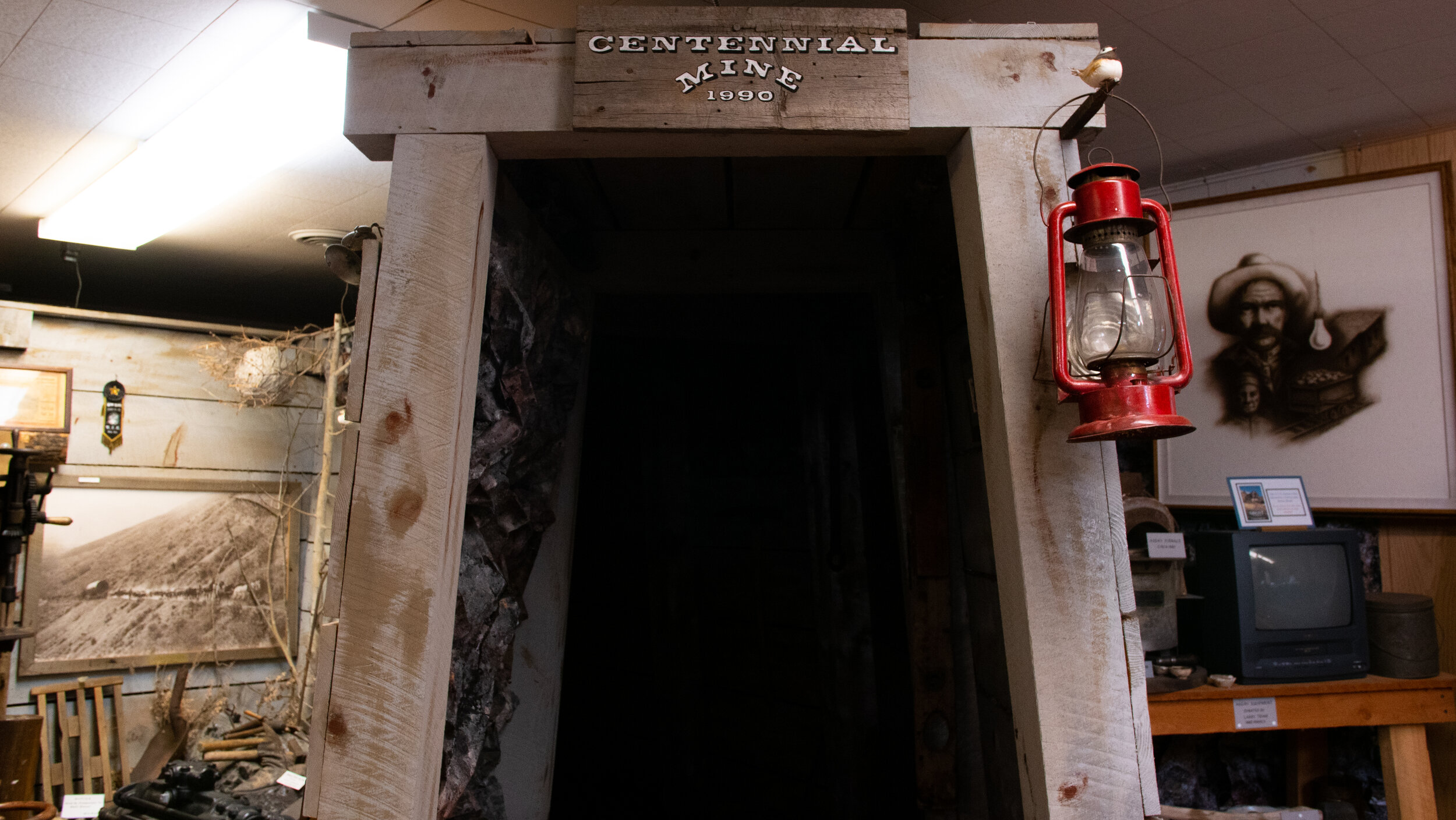
Mining
For decades, mining was the heart of the Wood River Valley.
The quest was for silver, galena (a lead-bearing ore that is often associated with silver), and gold. Our hills are zigzagged with the roads prospectors made to reach their diggings. In 1917 a devastating avalanche took the lives of 17 miners. The museum celebrates our mining heritage with a walk-through replica of a mine tunnel, samples of ore taken from our hills, an assay furnace from 1890, a surveying transit, an ore wagon model, and numerous photos from the heyday of mining.
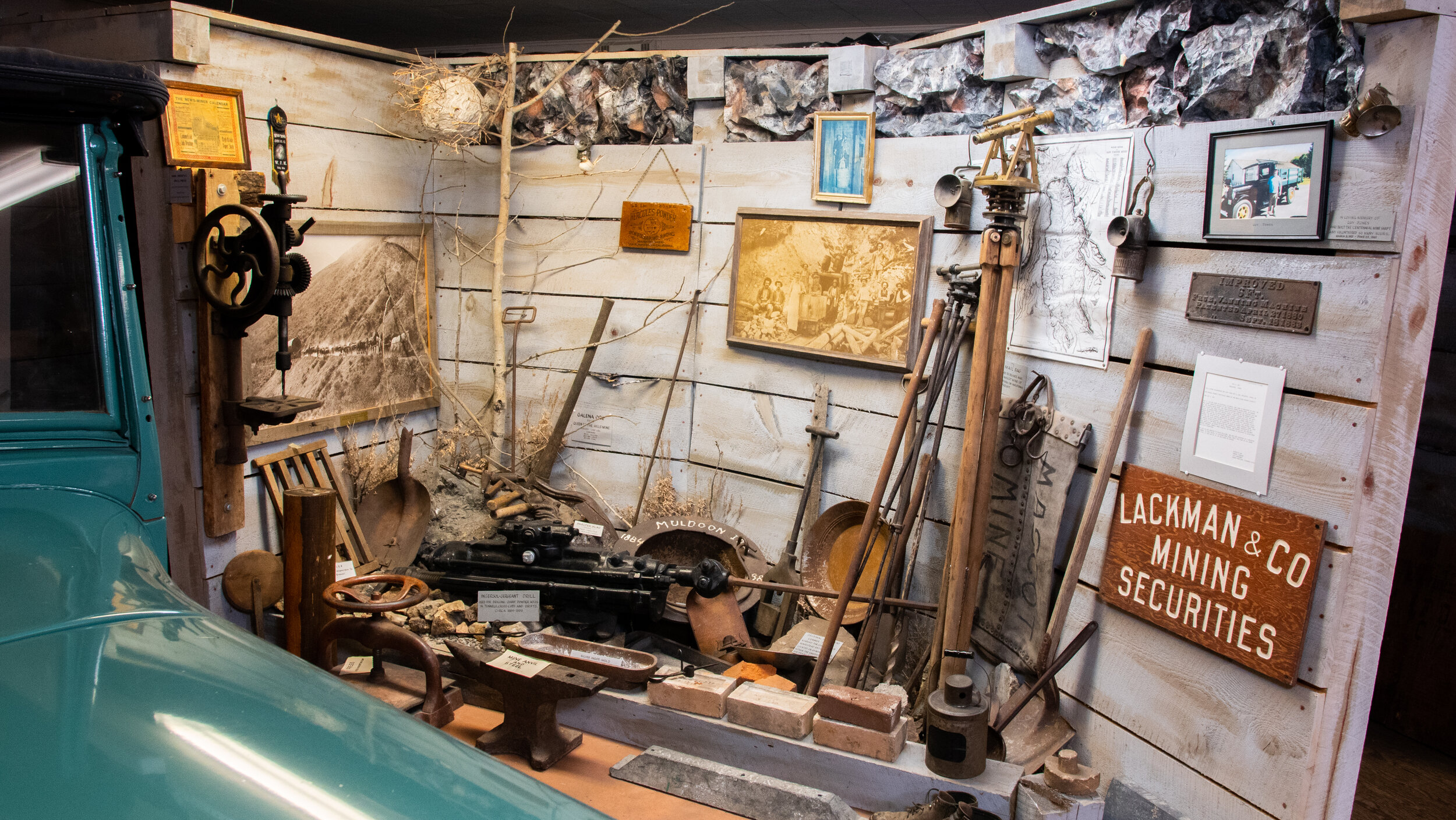
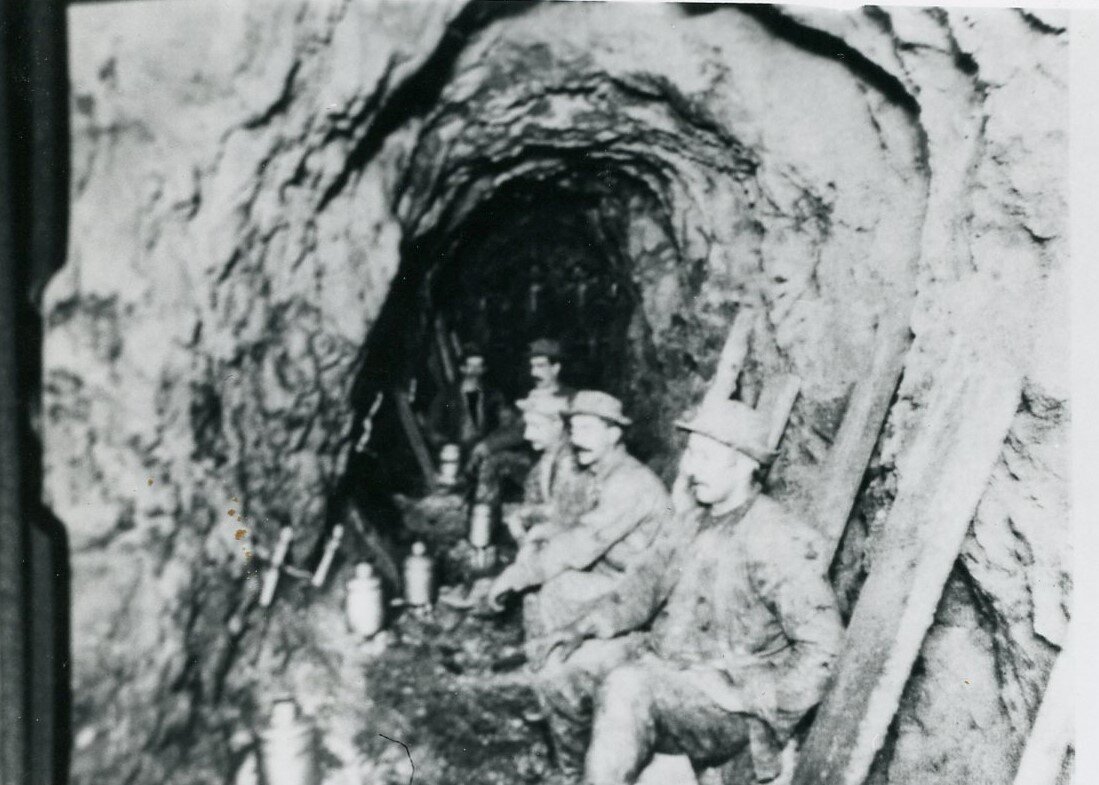
Miners in tunnel, using miner's candles
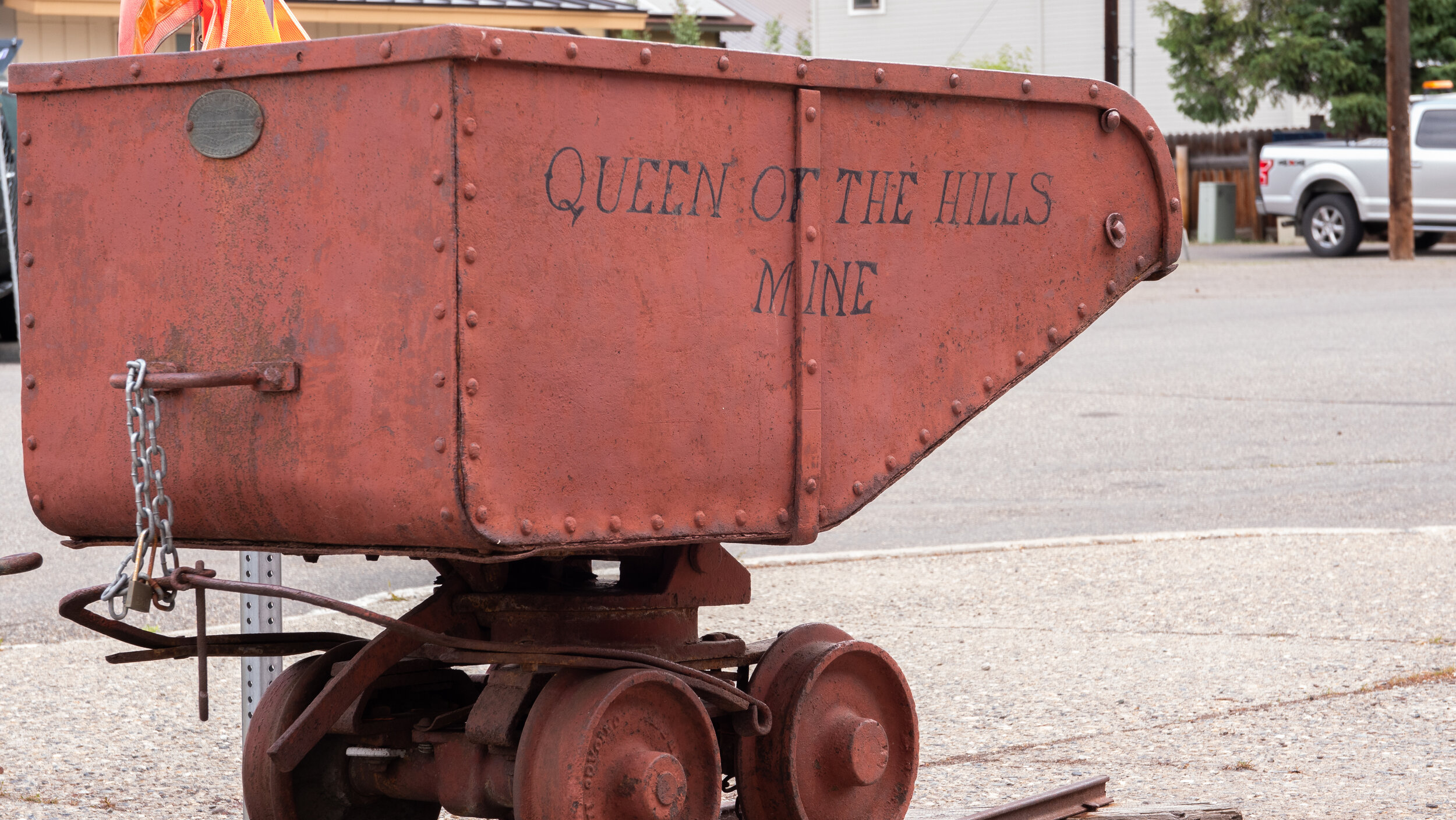
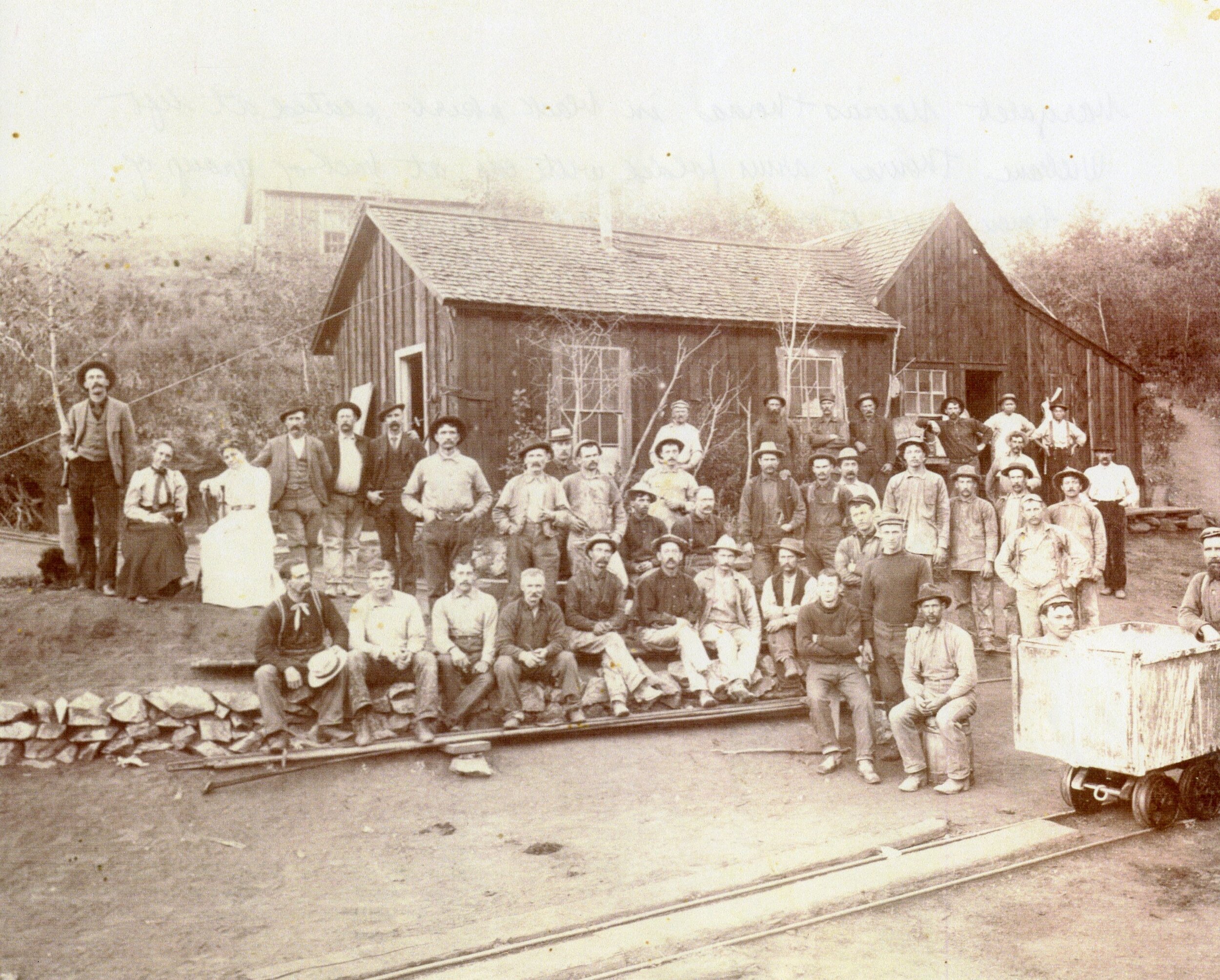
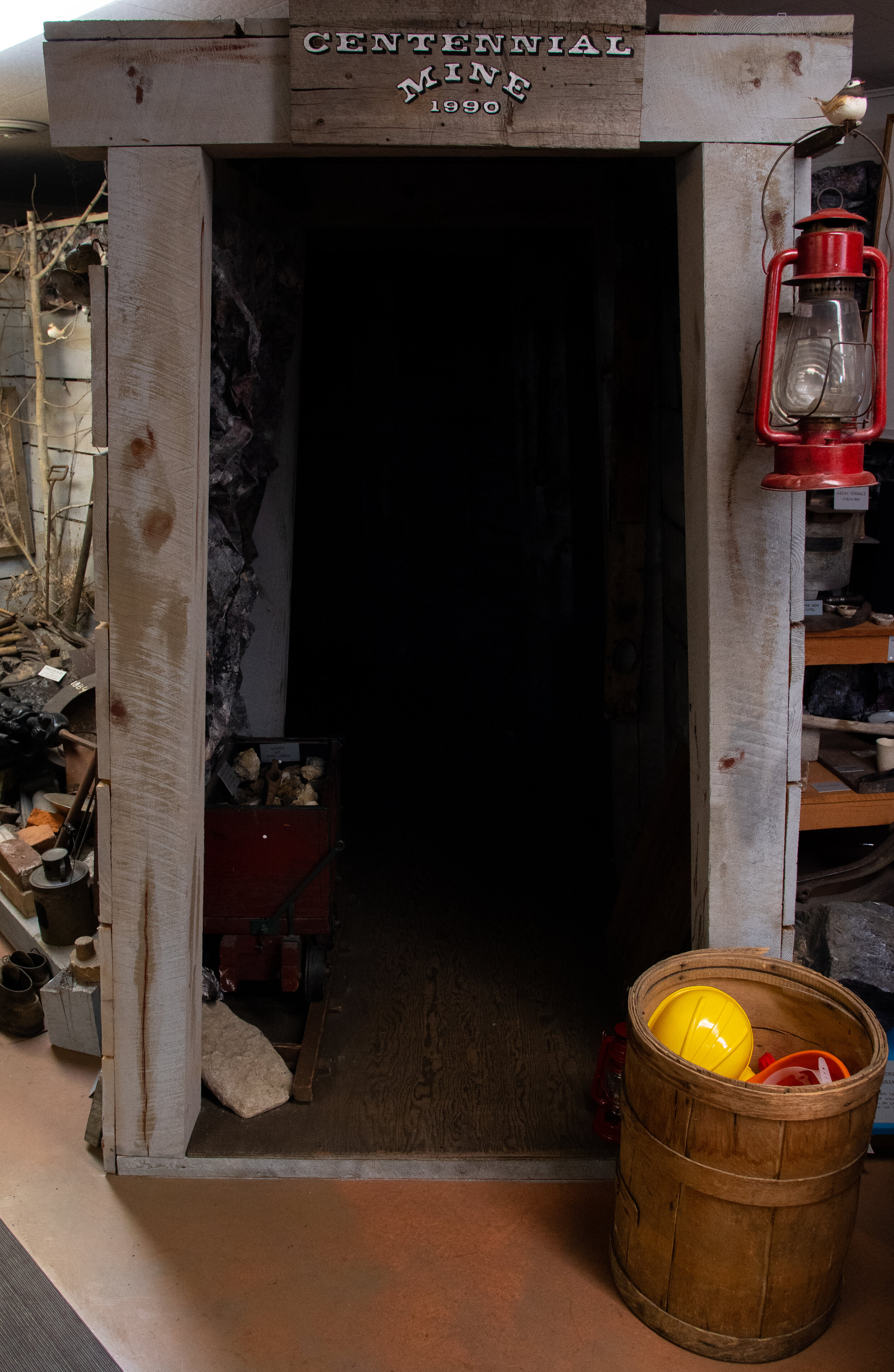
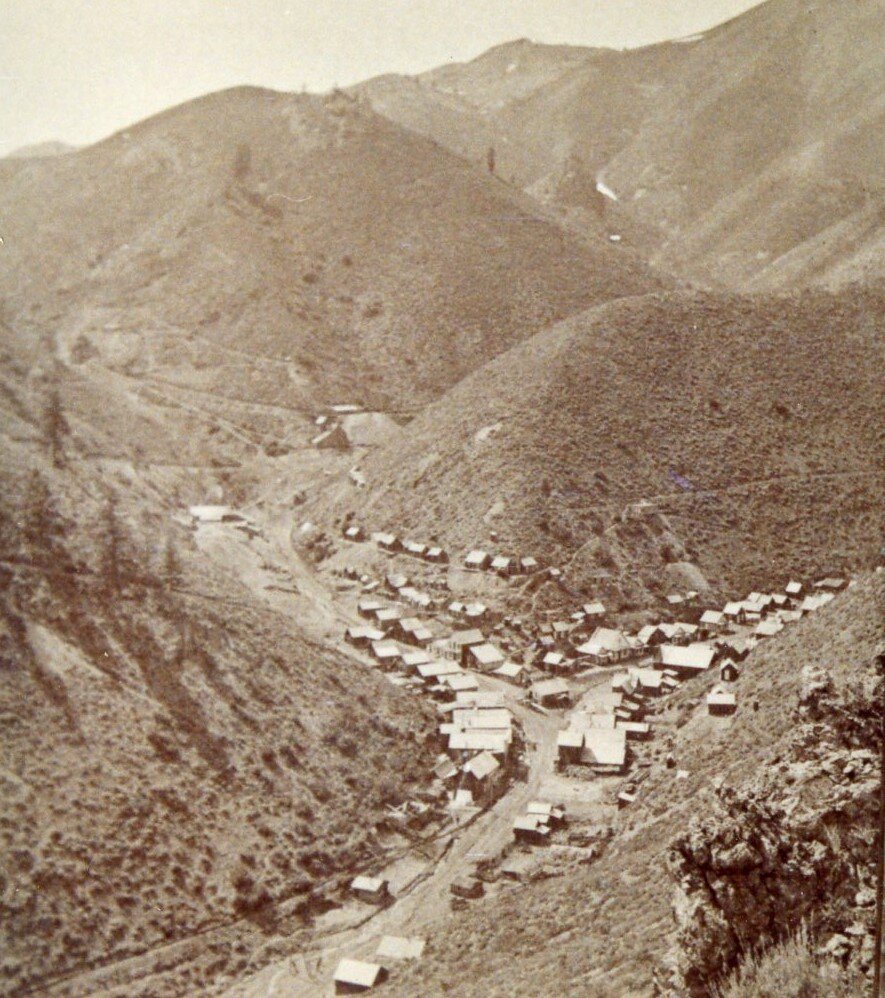
Bullion, Idaho
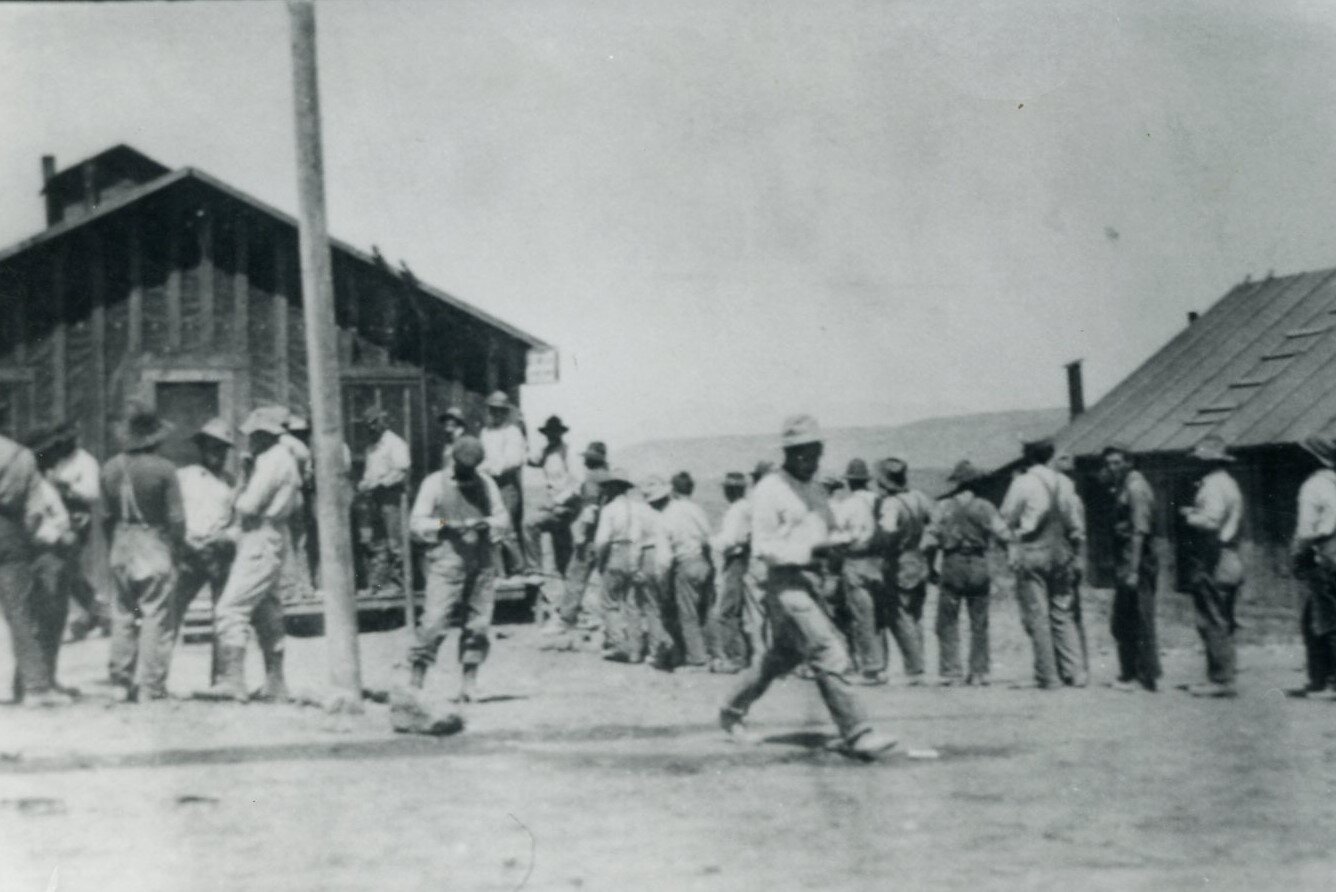
Miners in line for payday

Political
Among our displays is one of the country’s largest publicly displayed collections of political campaign buttons & memorabilia, reportedly only second in size to the Smithsonian.
Mr. Joe Fuld, born in 1878, was a prominent Hailey businessman and the first president of the American Political Items Collectors Association. He began his collection in the late 1800s, and donated it to the BCHM at its opening in 1964. The collection contains well over 5,000 items, some of which date back to the early 1820s. The BCHM continues his collecting to this day, adding to it with every election season.
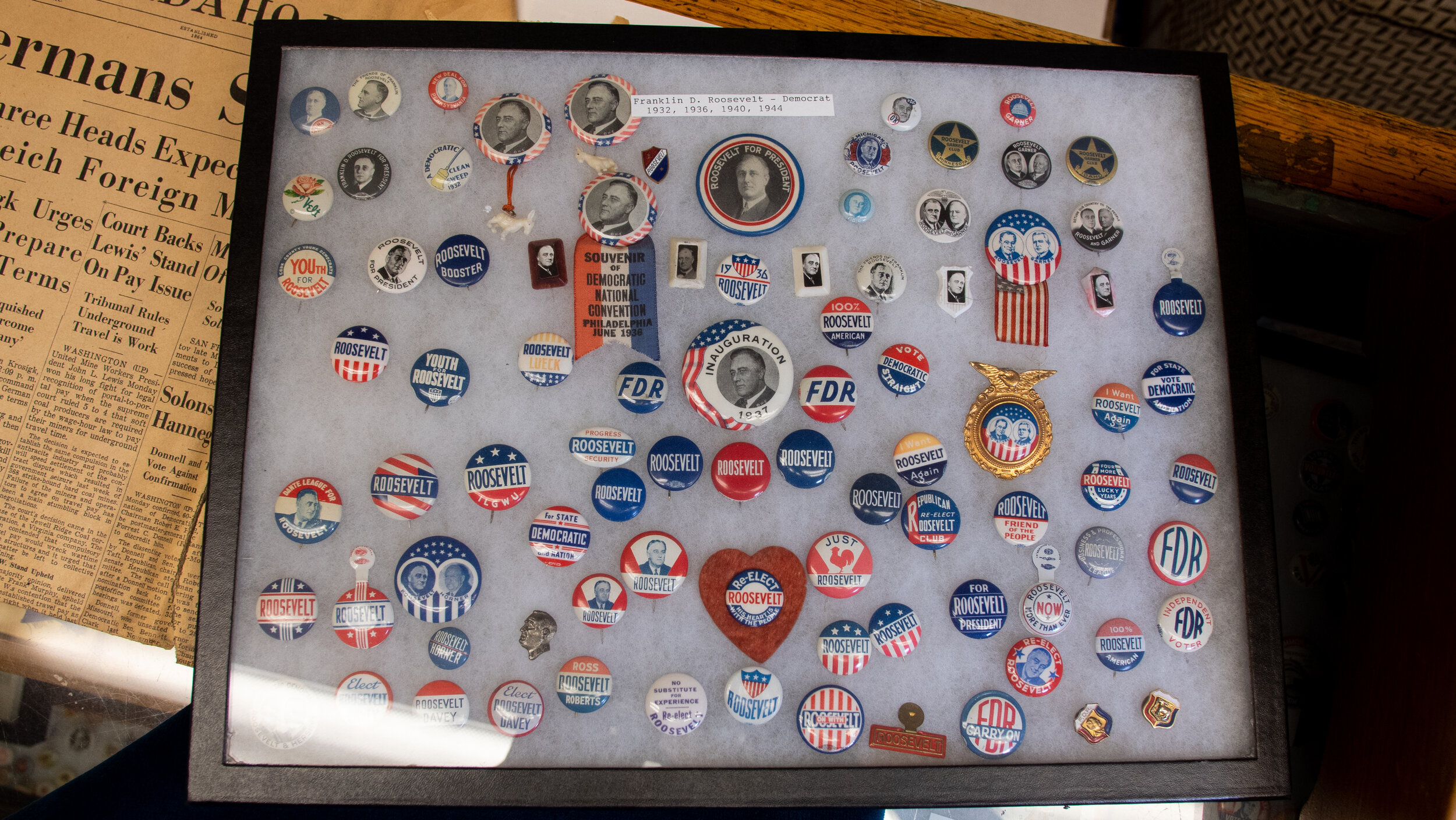

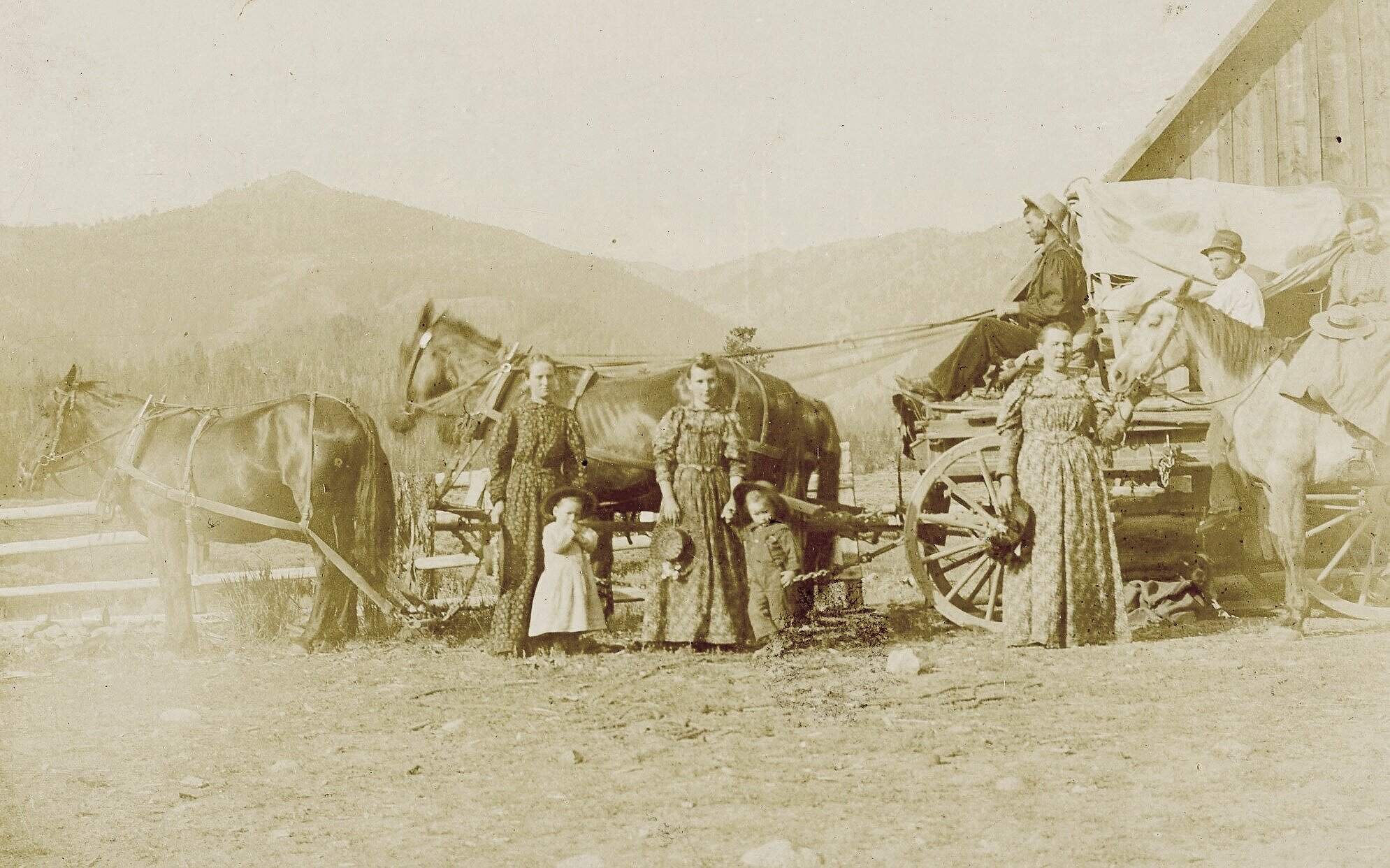
PIONEER LIFESTYLE
The life of a pioneering family was one of difficulty and hard work. The mountains of the Wood River Valley, although creating stunning scenery, were a harsh environment to establish a homestead. Short growing seasons, heavy snowfall in winters, and isolation from other communities made the early communities tough and perseverant.
But persevere they did, and while the earliest pioneers created their townships they also became a tight knit community.
On display in BCHM are numerous examples of the way of life for the early pioneers. An early 1900s kitchen shows how everyday tasks as simple as making food and washing laundry, was a rustic experience.
In the pioneer schoolroom, children can sit at desks and experience how differently school looked and felt over 100 years ago. Chalkboard slates, dictionaries on stands, and the stern- looking schoolmarm with her pointer stick complete the scene.
The general store displayed in the BCHM is modeled after Friedman’s general store, an establishment that lasted more than 65 years on Main street in Hailey. S.M. Friedman and S.J. Friedman were second cousins, and immigrated from Prussia to join in the successful merchant opportunities happening in the West. Starting in Utah, they learned the trade by selling wares and necessities to prospecting miners heading toward California in the mid-1800s. They came to the Wood River Valley with the mining boom, and opened a dry goods store as well as a grocery store. The museum storefront display features the original cash register from Freidman’s Dry Goods.
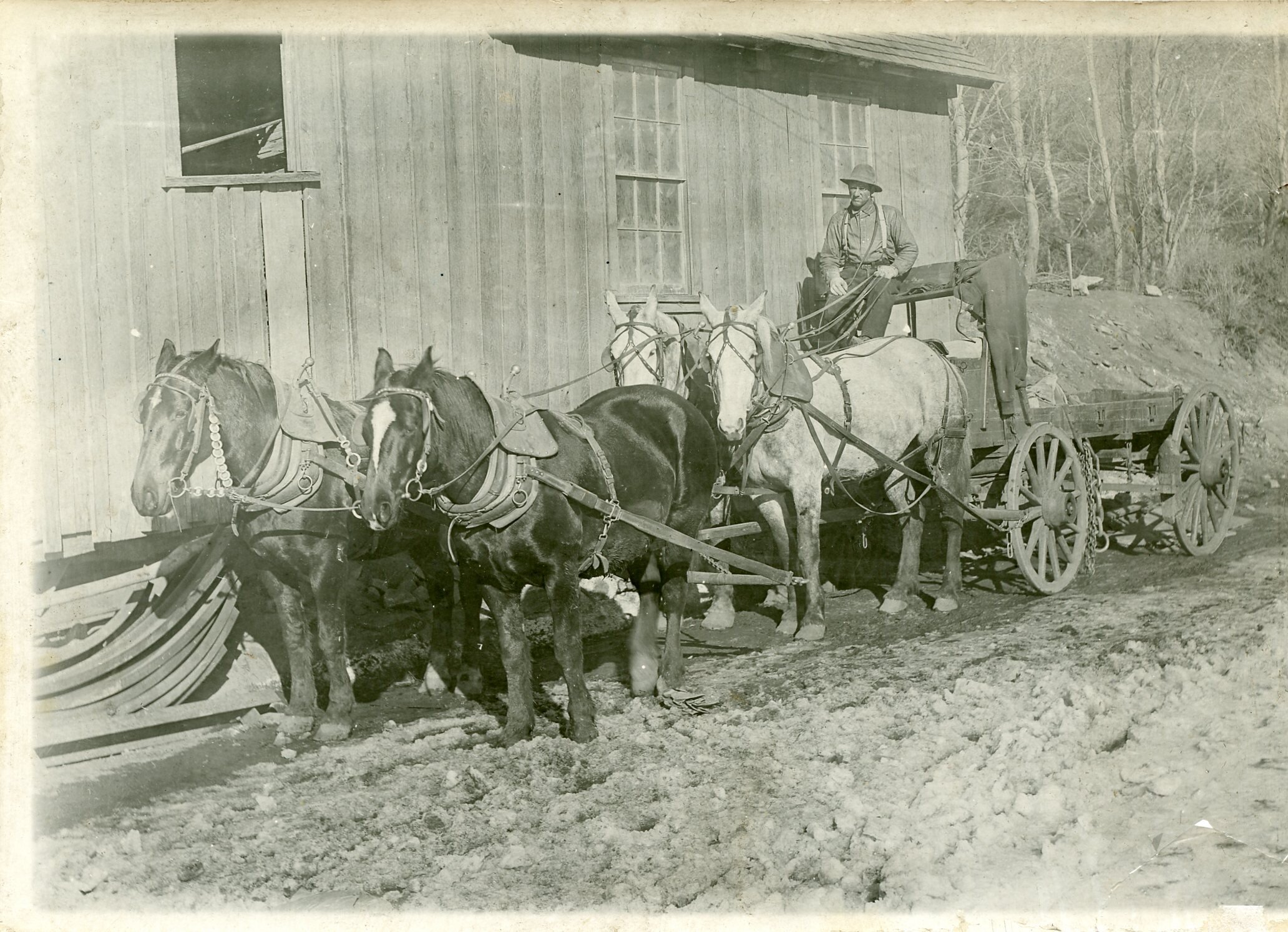
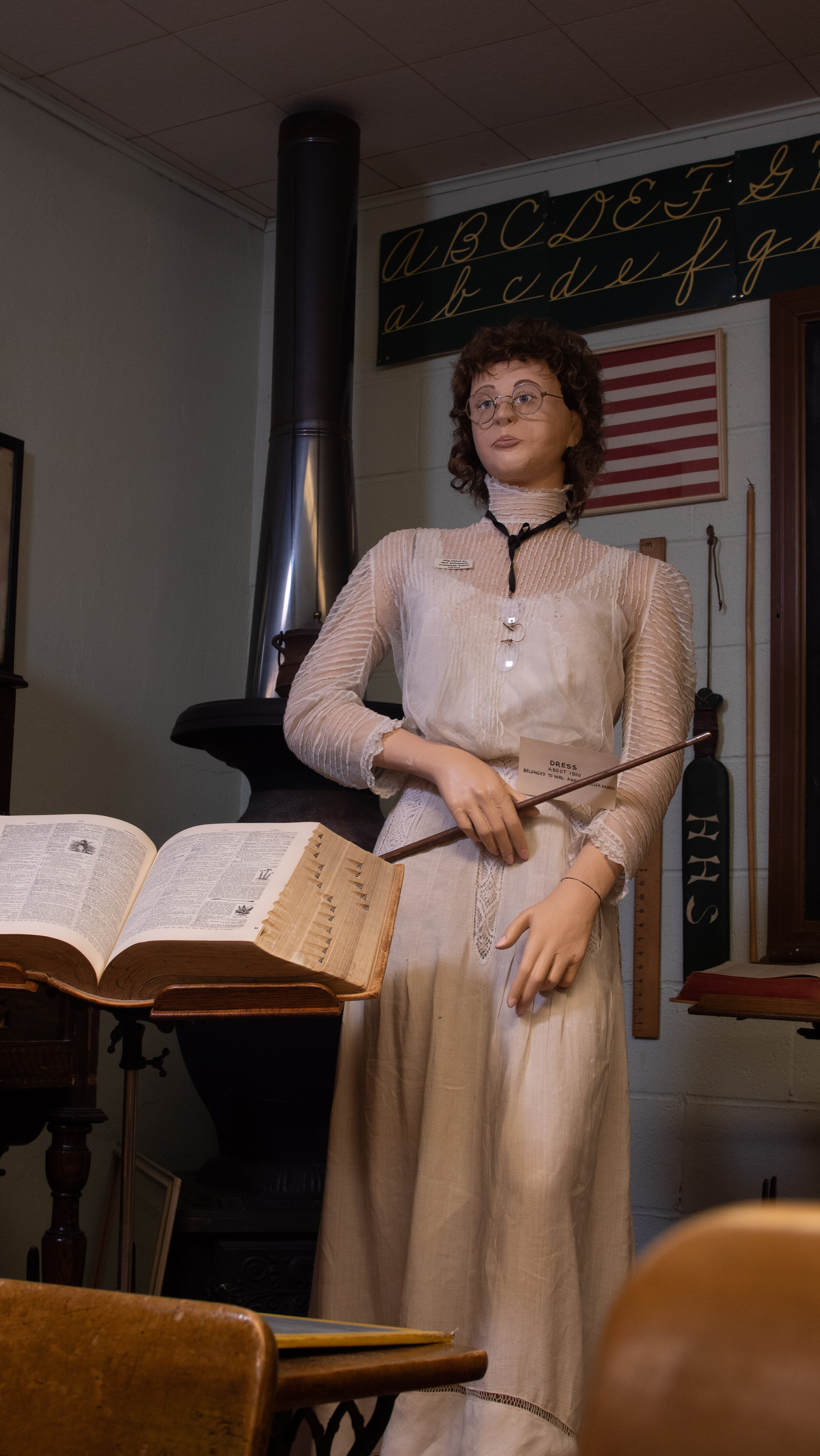

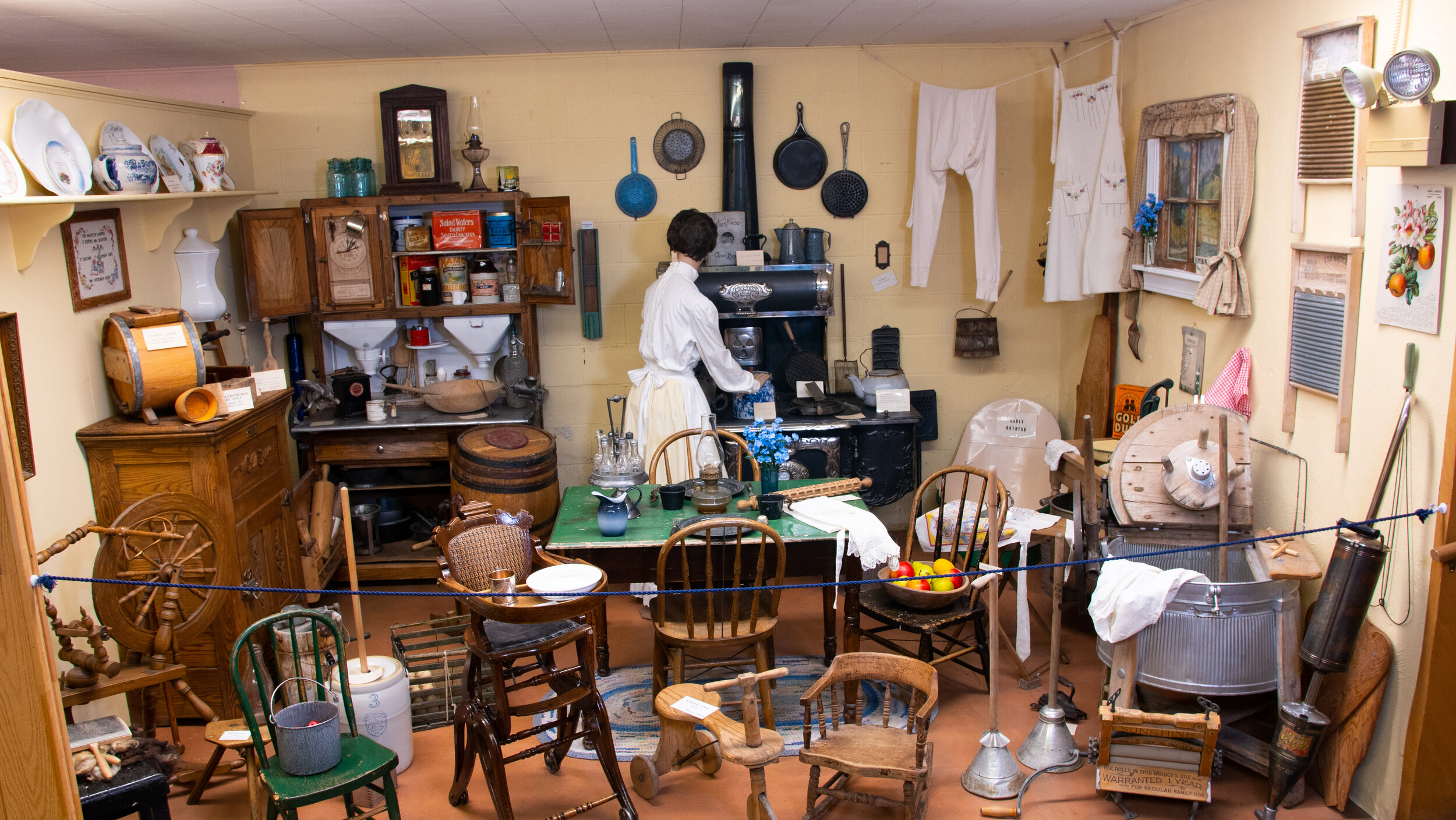
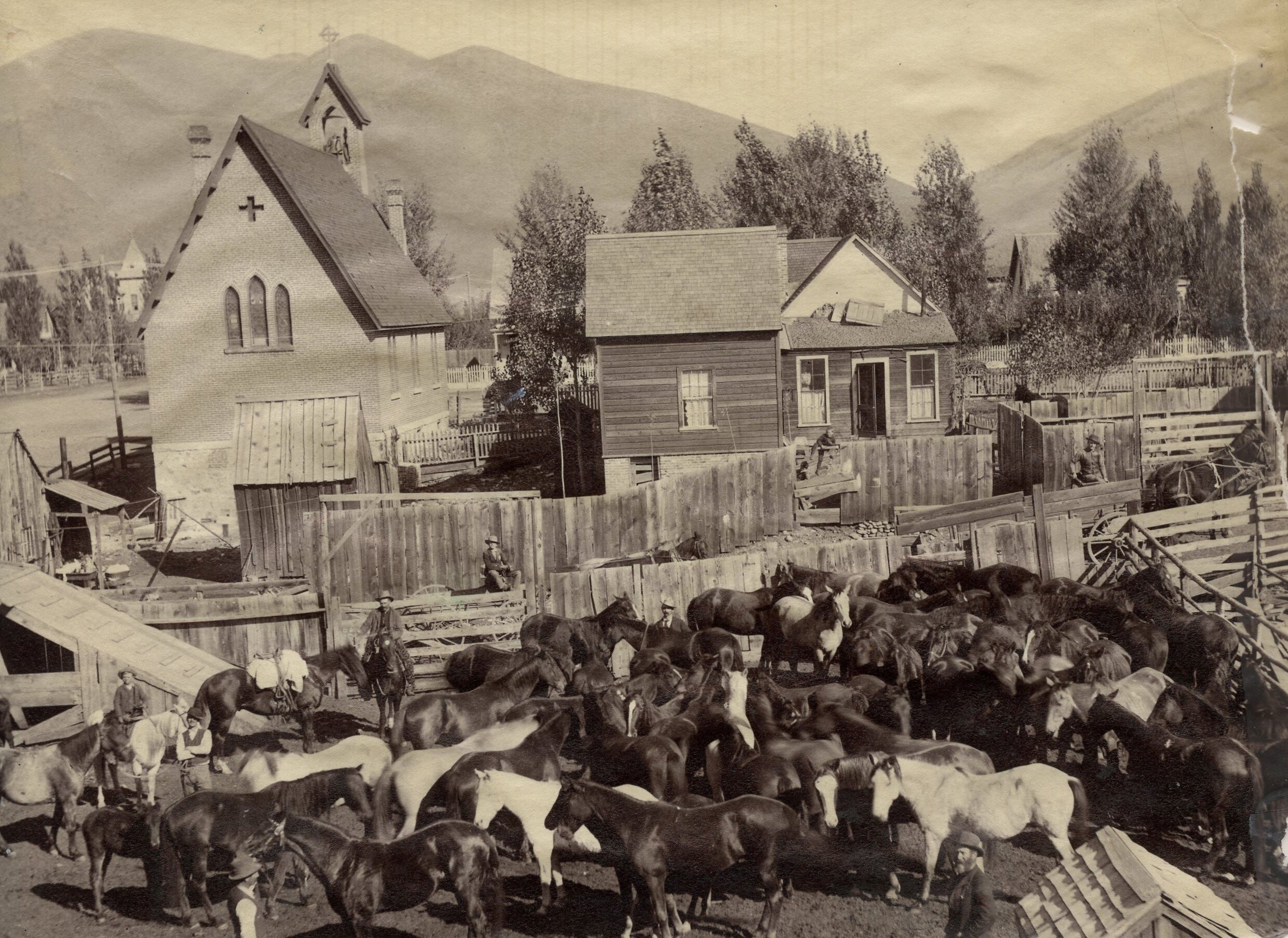
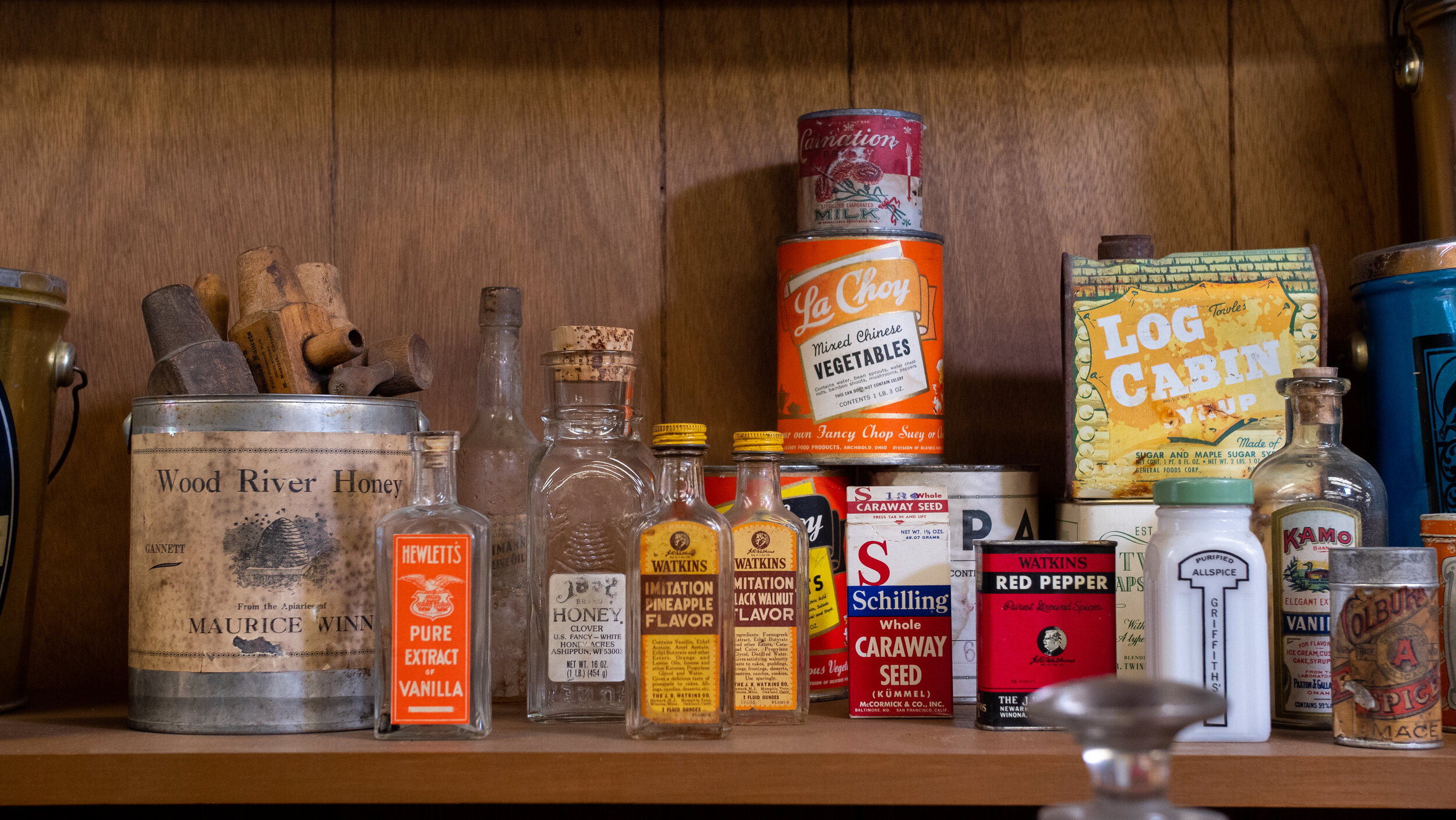
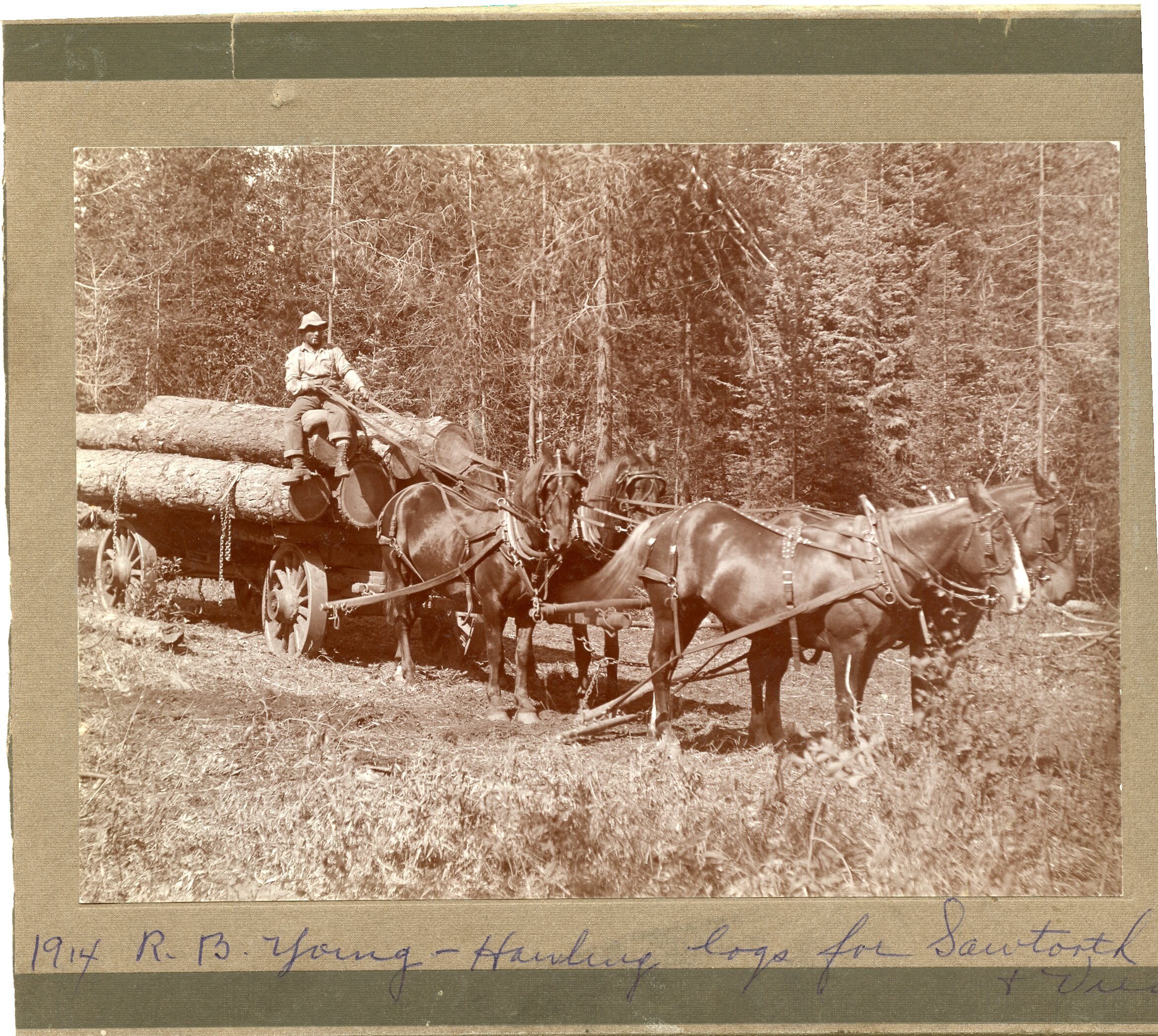
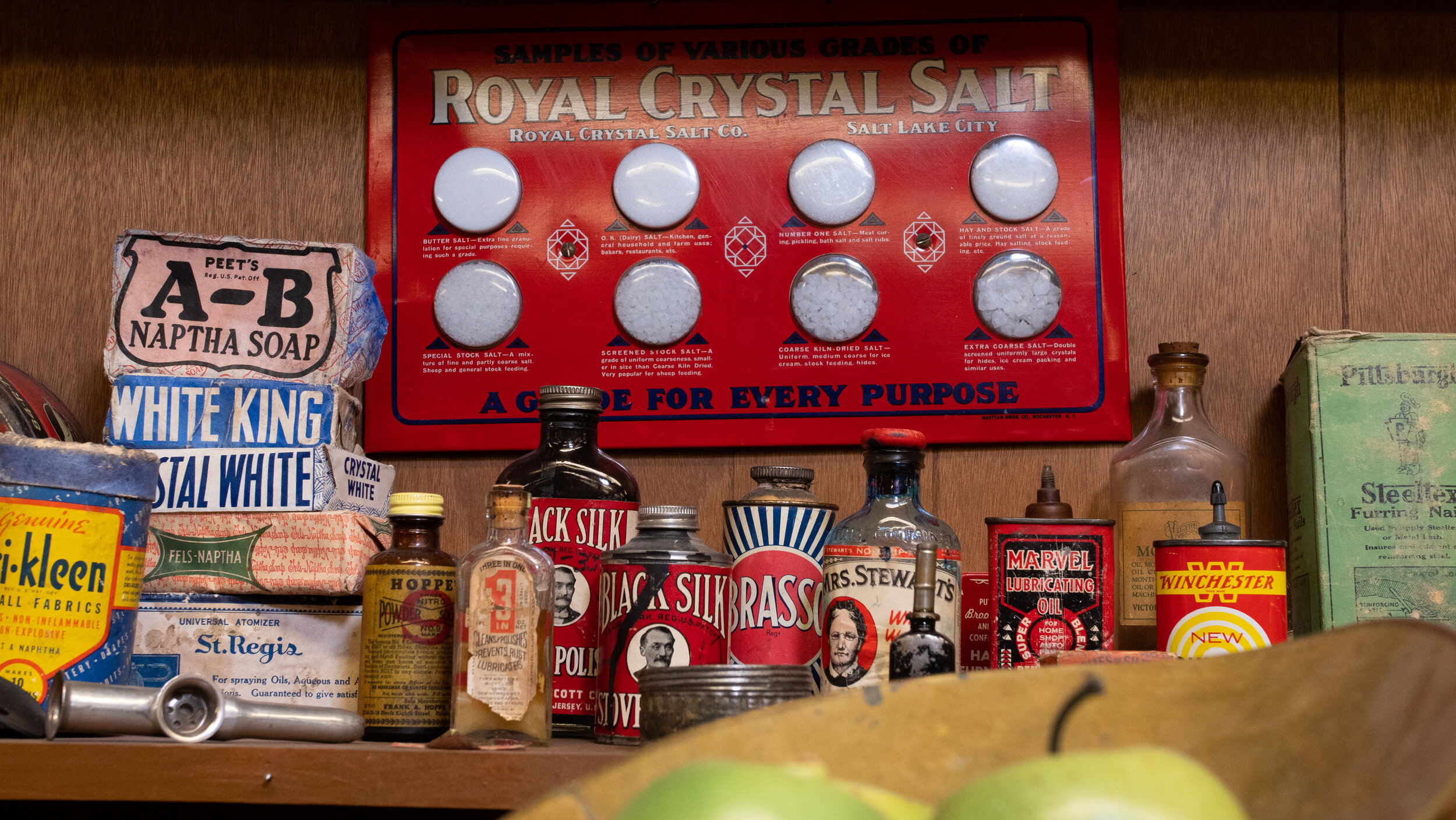
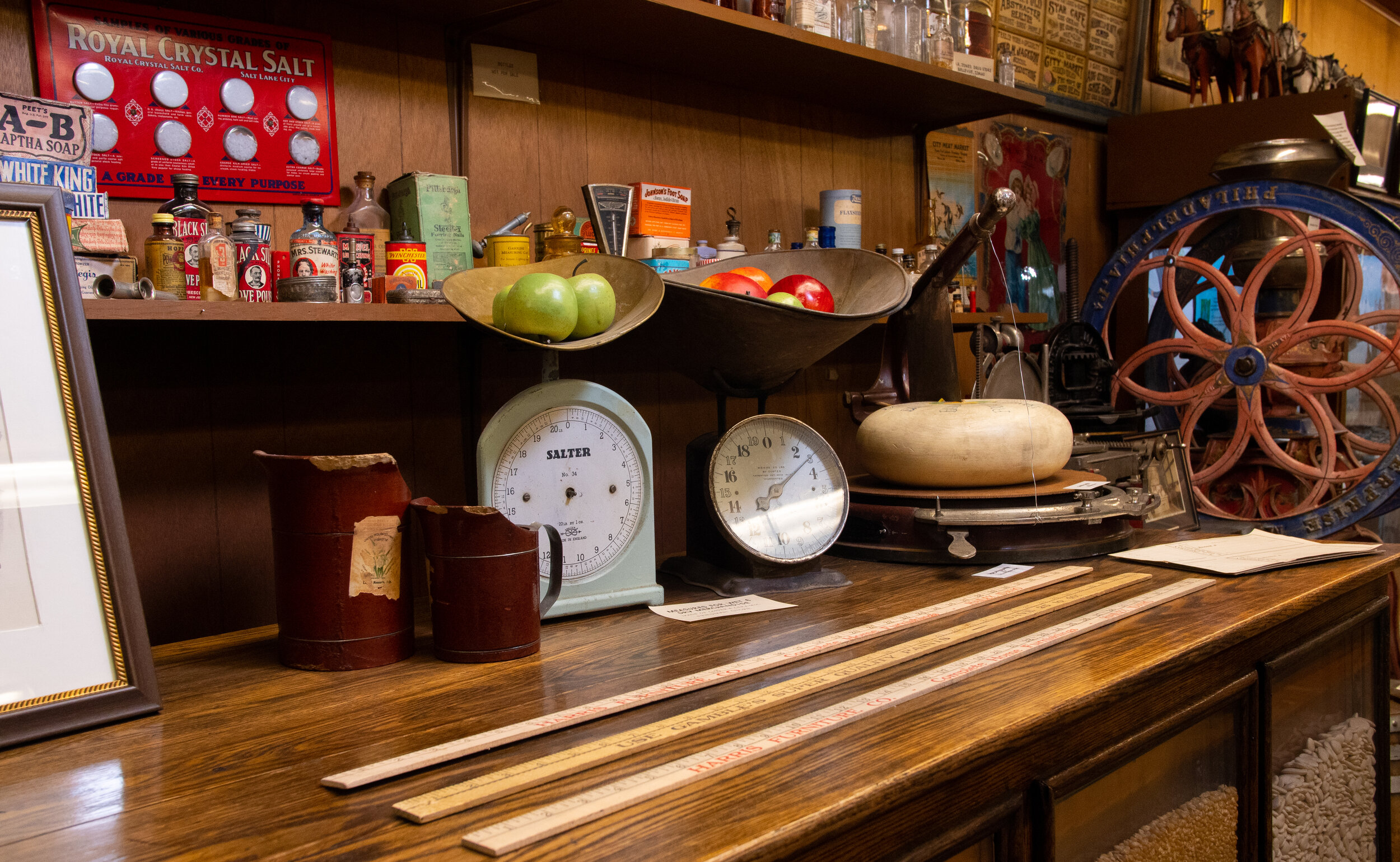

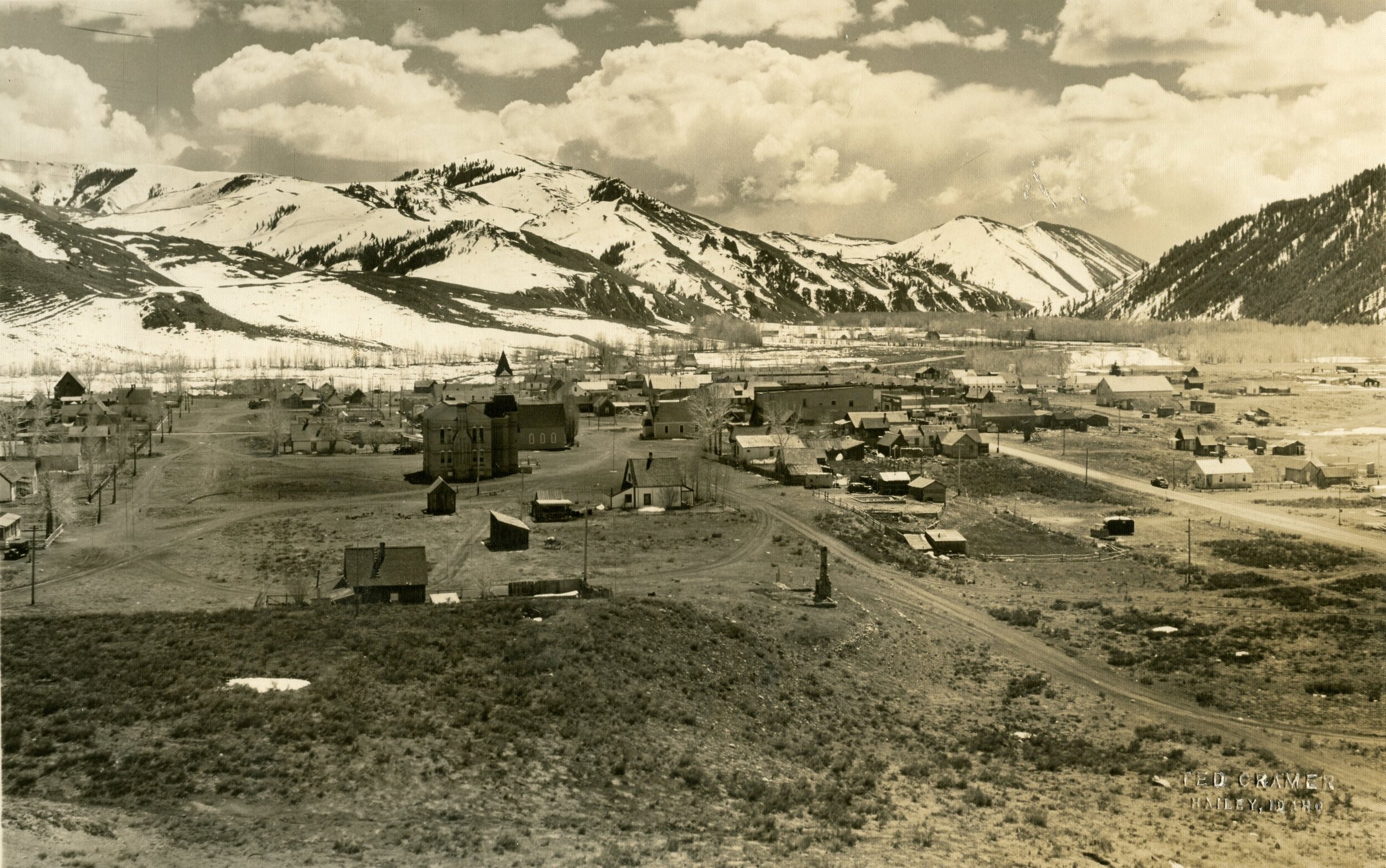

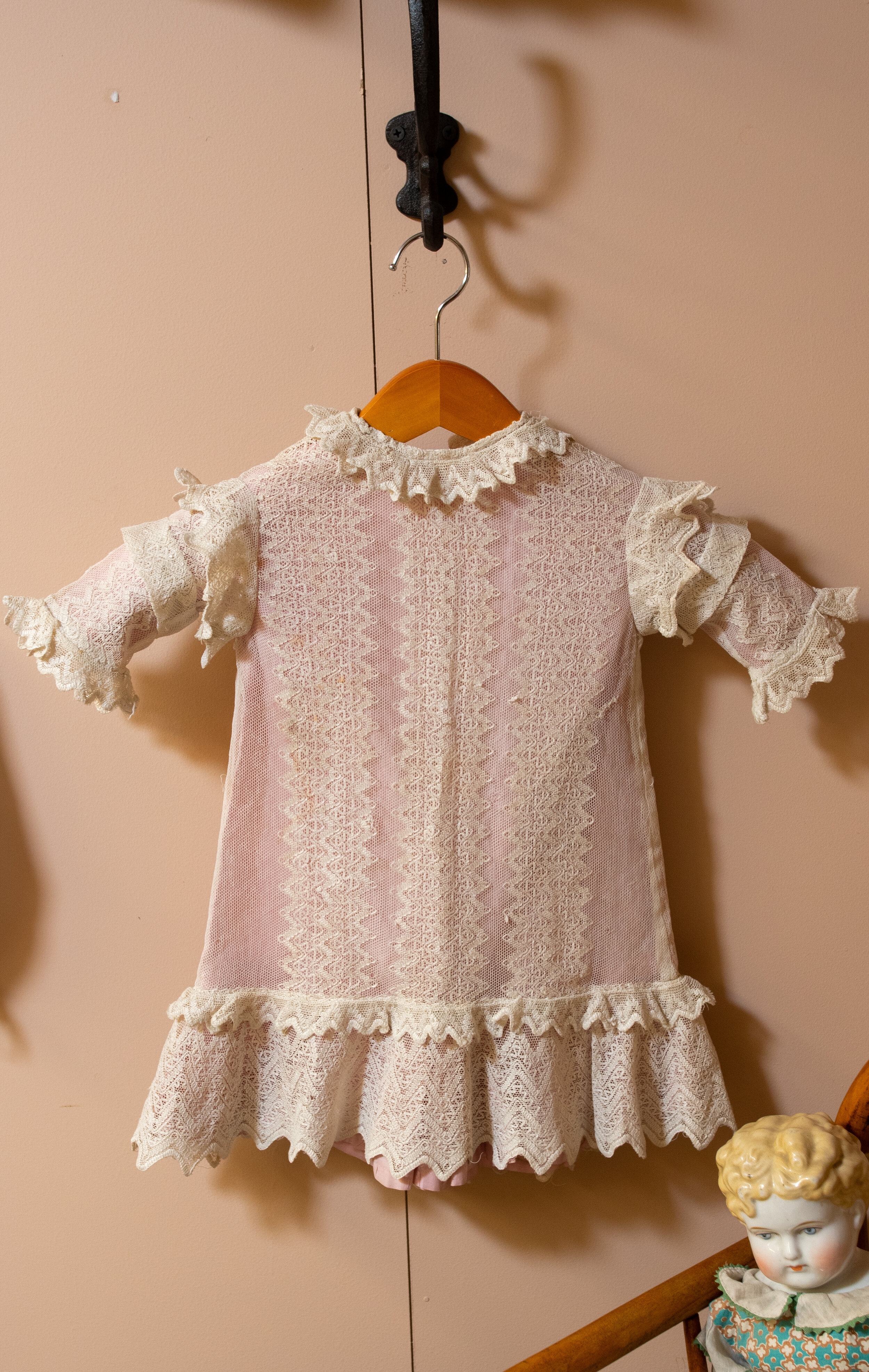
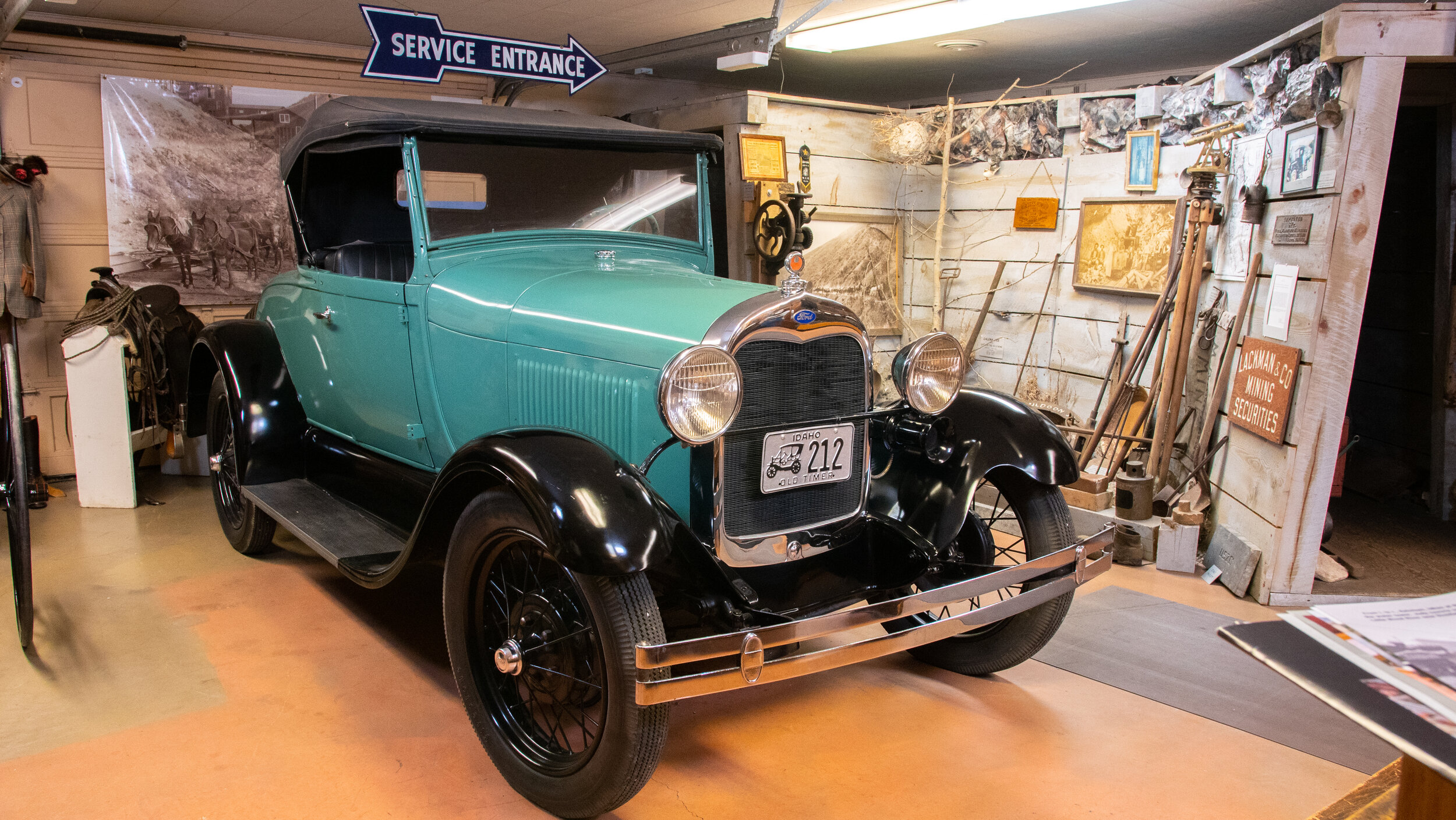
Transportation
Transportation has played a crucial role in the settling and growth of the Wood River Valley. From the late 1800s, the Oregon Short Line facilitated a rail route through Idaho, with a spur line reaching out to the Wood River Valley through Shoshone. Train accessibility promoted successful settlement of the difficult to reach region.
With the mining boom, train transportation became essential to the economy, transferring ore from the mining operations. During the same time frame the thriving sheep industry relied on the OSL as the carrier of sheep loads.
World War 1 became an important time for the economy of the Wood River Valley. Idaho’s minerals and metals produced from the mining industries became valuable to the war efforts. Agricultural products were also needed, boosting the need for farming as well as transportation.
The end of WW1 brought less demand for these exports, and the 1920s became a time of economic downturn in Blaine County. Around this time, the Union Pacific Railroad consolidated the company that included the Oregon Short Line, and the section of rail that led to the Wood River Valley was part of a new UP system.
Under the direction of Averill Harriman, the Union Pacific built the Sun Valley Lodge in 1936. The company launched a successful promotion of the new ski resort, even using their railroad engineers to design new chairlifts. The business venture was successful, and Sun Valley’s popularity continues to this day.
In 1958-1972 the extremely popular “Snowball Express” train from Los Angeles to Sun Valley carried passengers in style to the winter resort.
In May of 1975 the last passenger train pulled into the Sun Valley station.
By 1982 Union Pacific ended the Wood River Branch line, removing the rails in 1987. The Idaho Department of Transportation and Blaine County Recreation District began laying a recreational bike trail where the train tracks had been. The Wood River Trail, locally known as “the bike path” was finished in 1992 and is a well-traveled paved trail that connects the towns of Bellevue, Hailey, and Ketchum. It serves as a remnant of the history that shaped our valley.
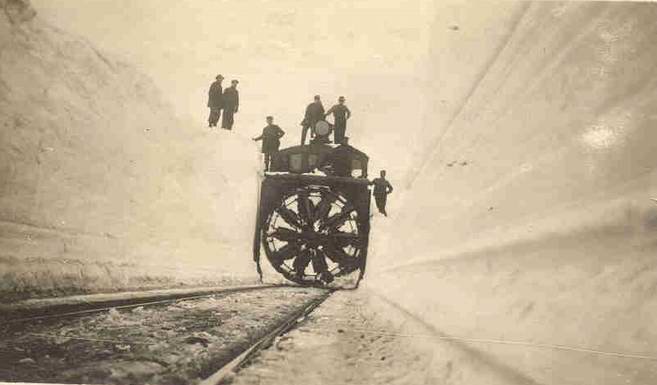
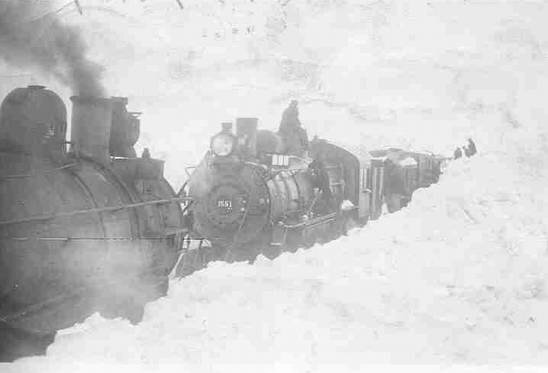
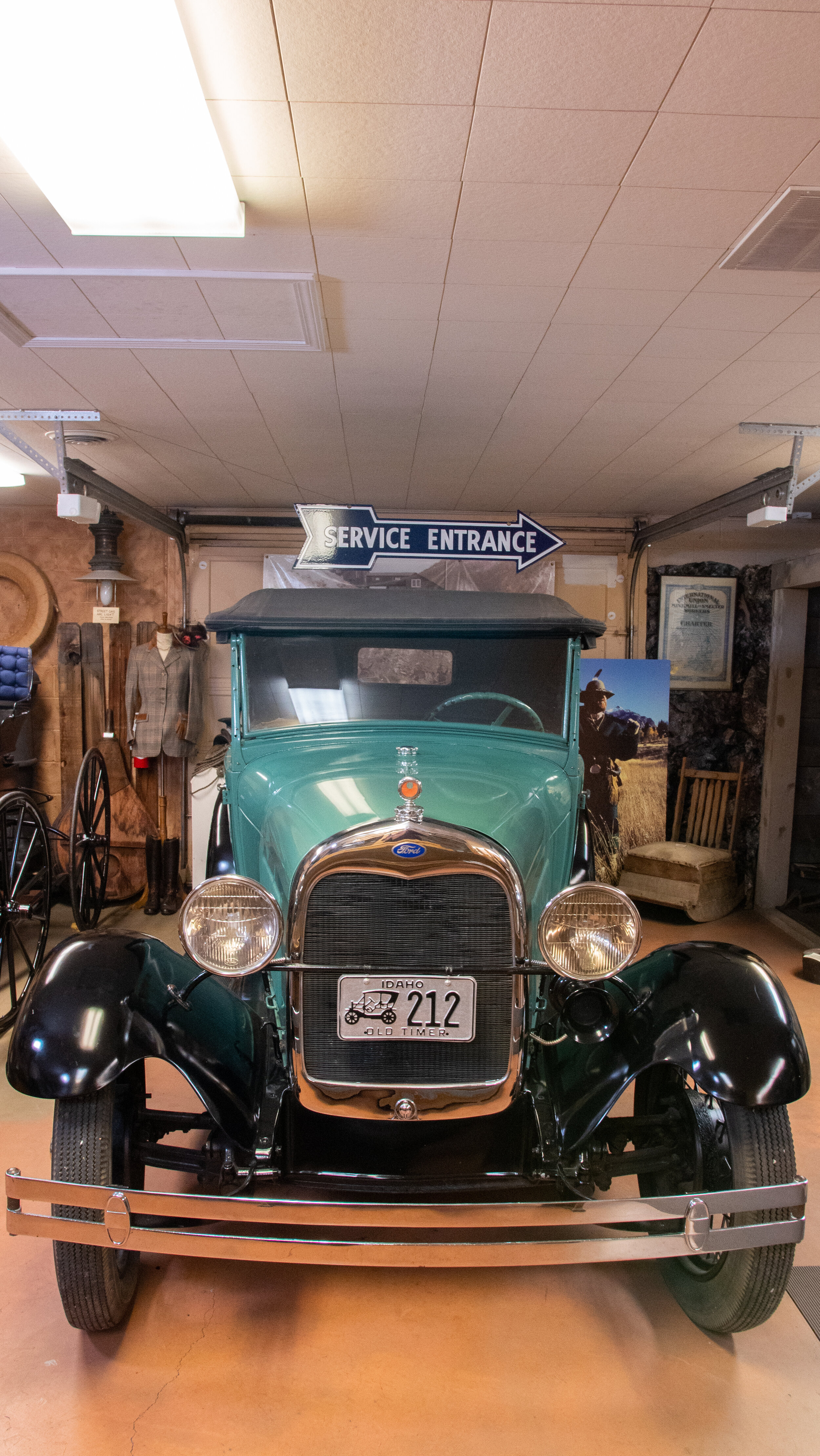


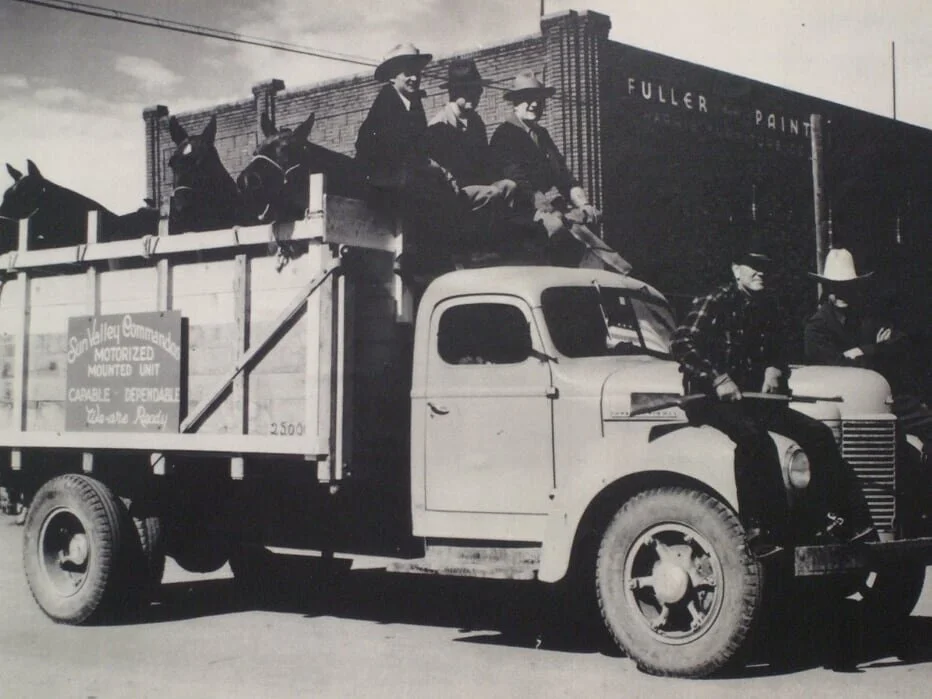

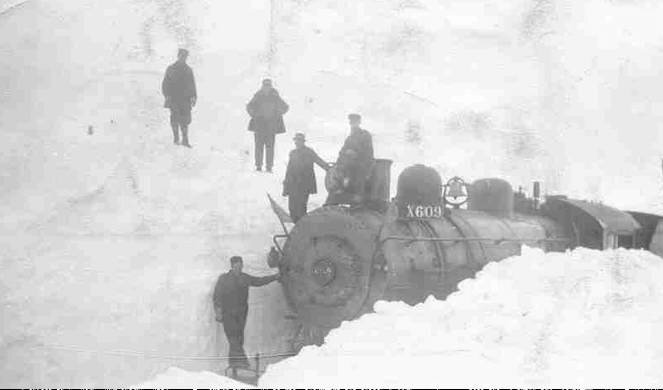
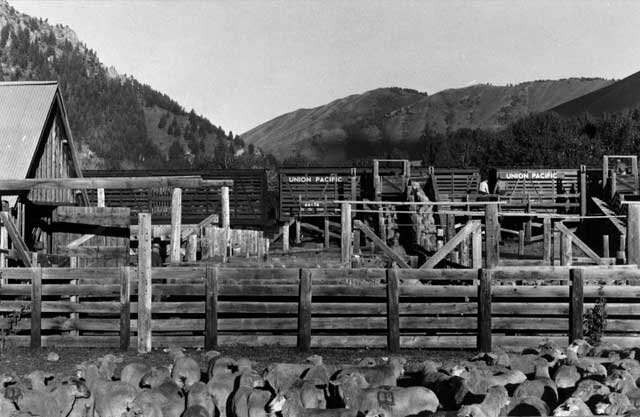
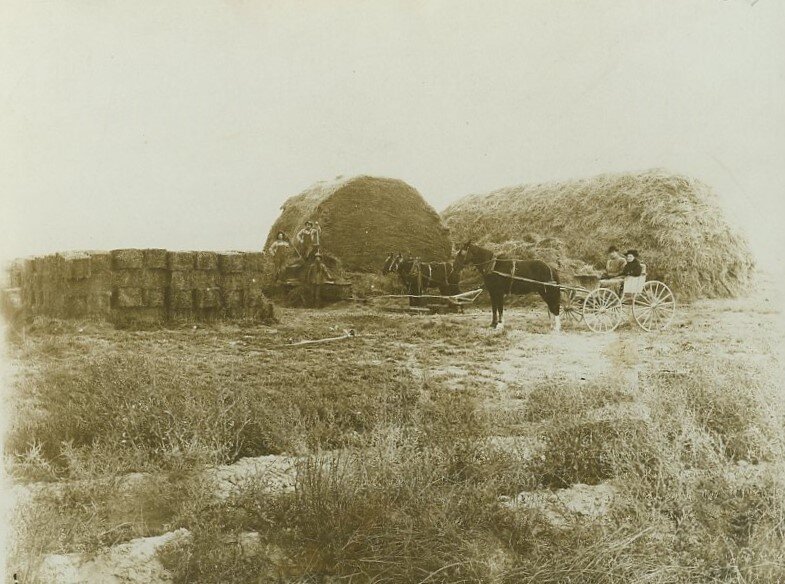
Ranching
As far back as the 1870s, farmers and ranchers were settling the Wood River Valley.
Ranching was prominent, and the sheep industry in particular became a strong economic boom alongside mining in the 1880s. John Hailey, owner of a stagecoach company and the namesake of Hailey, Idaho, is reported to have brought the first sheep in the late 1860s.
In Edward Wentworth’s 1948 book “America’s Sheep Trails”, he writes: “The sheep industry began to boom in 1882 and 1883 with the advent of the railroads, The sheep business was firmly implanted by the 1890s in Idaho.”
Wentworth’s book details that the sheep population in Idaho grew from 1,021 in 1870 to 27,362 by 1880. By 1890 the numbers had reached 357,712 and continued to grow to an impressive 2.65 million sheep by 1918.
The number of sheep in 1918 amounted to six times the population of people in Idaho in the same year.
To this day, thousands of sheep still pass through the Wood River Valley annually on a permanent sheep right of way. Blaine County celebrates and preserves this legacy with an annual Trailing of the Sheep festival every October.
A statue commemorating the sheep heritage in the valley stands on the corner of Main and Myrtle in Hailey, Idaho.
After the mining boom of the 1880s had fallen, many miners turned to ranching as their means of making a living. Some homesteading families stayed for generations, and developed successful ranches and farms that have survived the changing of the times.
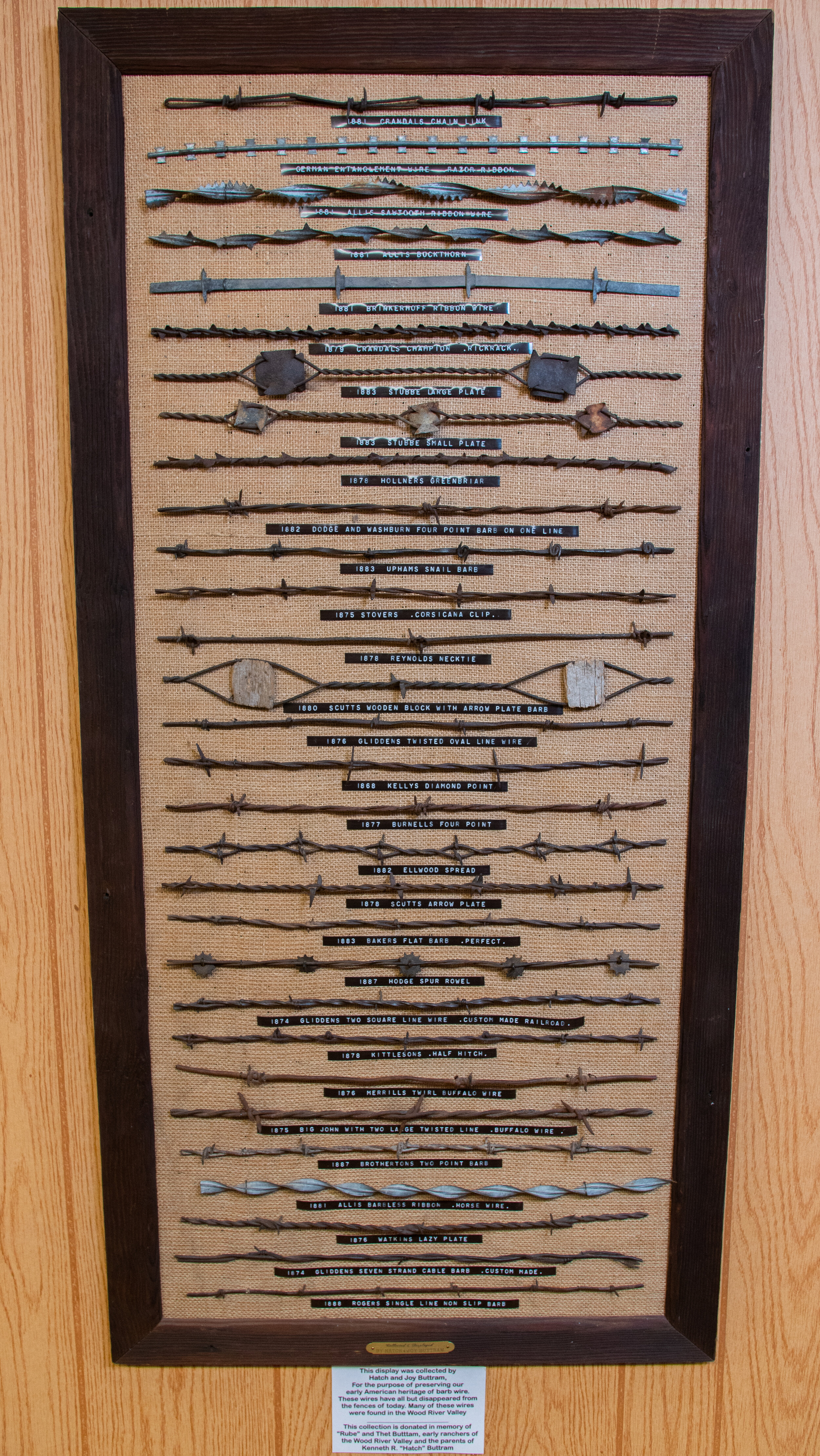


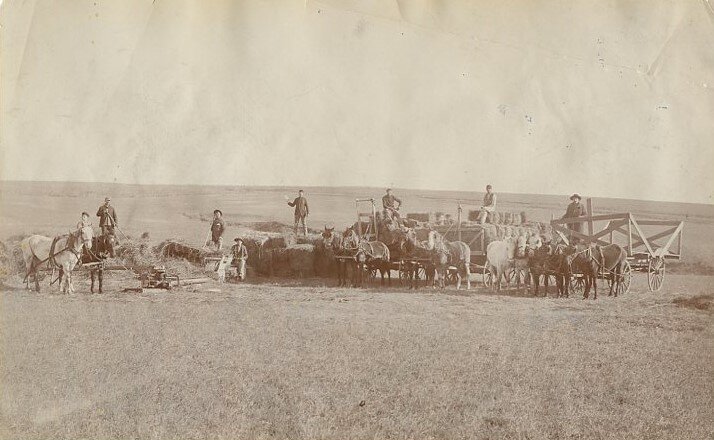
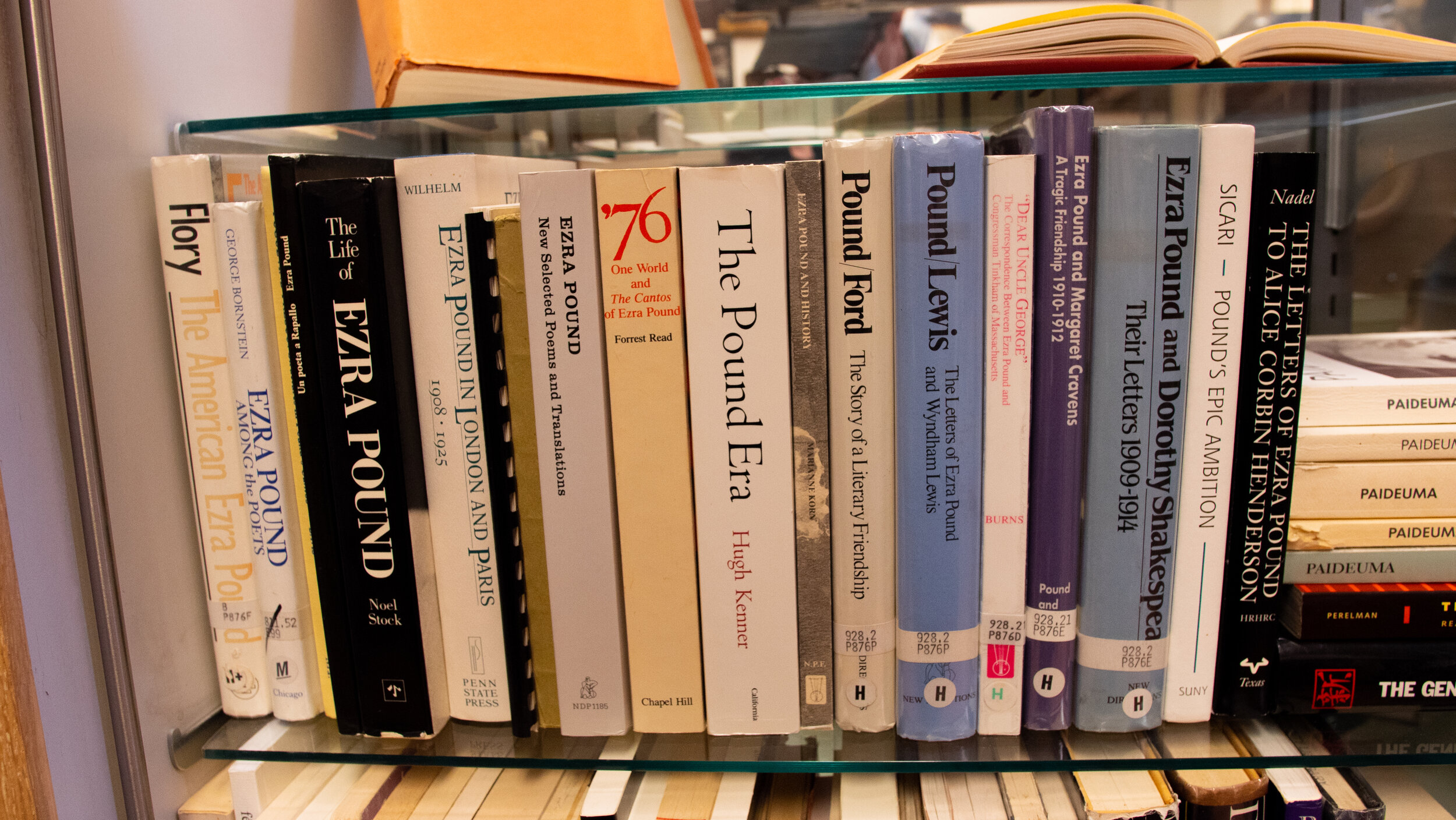
Ezra Pound
In 1885, Ezra Pound was born to Homer and Isabel Pound in Hailey, Idaho. Although he was to move back east in his early years, Pound was proud of his Western beginnings and often referred to his being born “in the wild west.”
Ezra Pound was an influential and controversial writer. His literary style influenced many writers of his era, including T.S. Eliot, Robert Frost, and Ernest Hemingway.
He worked as an editor in London, lived in Paris in the 1920s, where he frequented the bookshop Shakespeare and Co. amongst many other writers.
During WW2, he moved to Italy and became a passionate supporter of Mussolini. During World War II, he was paid by the Italian government to make hundreds of radio broadcasts criticizing the United States, Franklin D. Roosevelt and Jews, as a result of which he was arrested in 1945 by American forces in Italy on charges of treason. He spent months in detention in a U.S. military camp in Pisa, including three weeks in an outdoor steel cage, which he said triggered a mental breakdown: "when the raft broke and the waters went over me". The following year he was deemed unfit to stand trial, and incarcerated in St. Elizabeth's psychiatric hospital in Washington, D.C., for over 12 years.
After his release, he left the United States and lived the remainder of his life in Venice, Italy. It was there that he died in 1972.
“Man reading should be man intensely alive. The book should be a ball of light in one’s hand.”
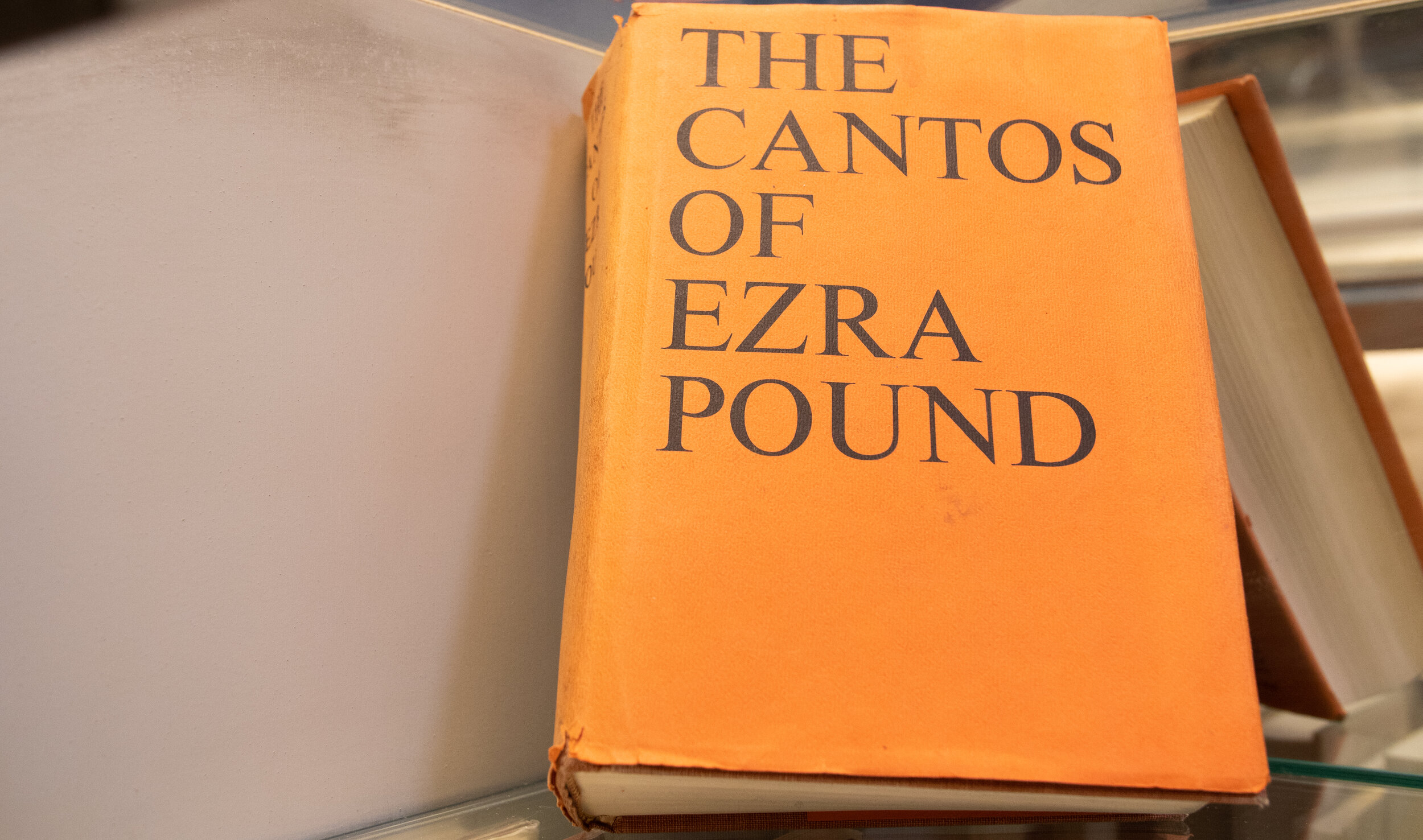

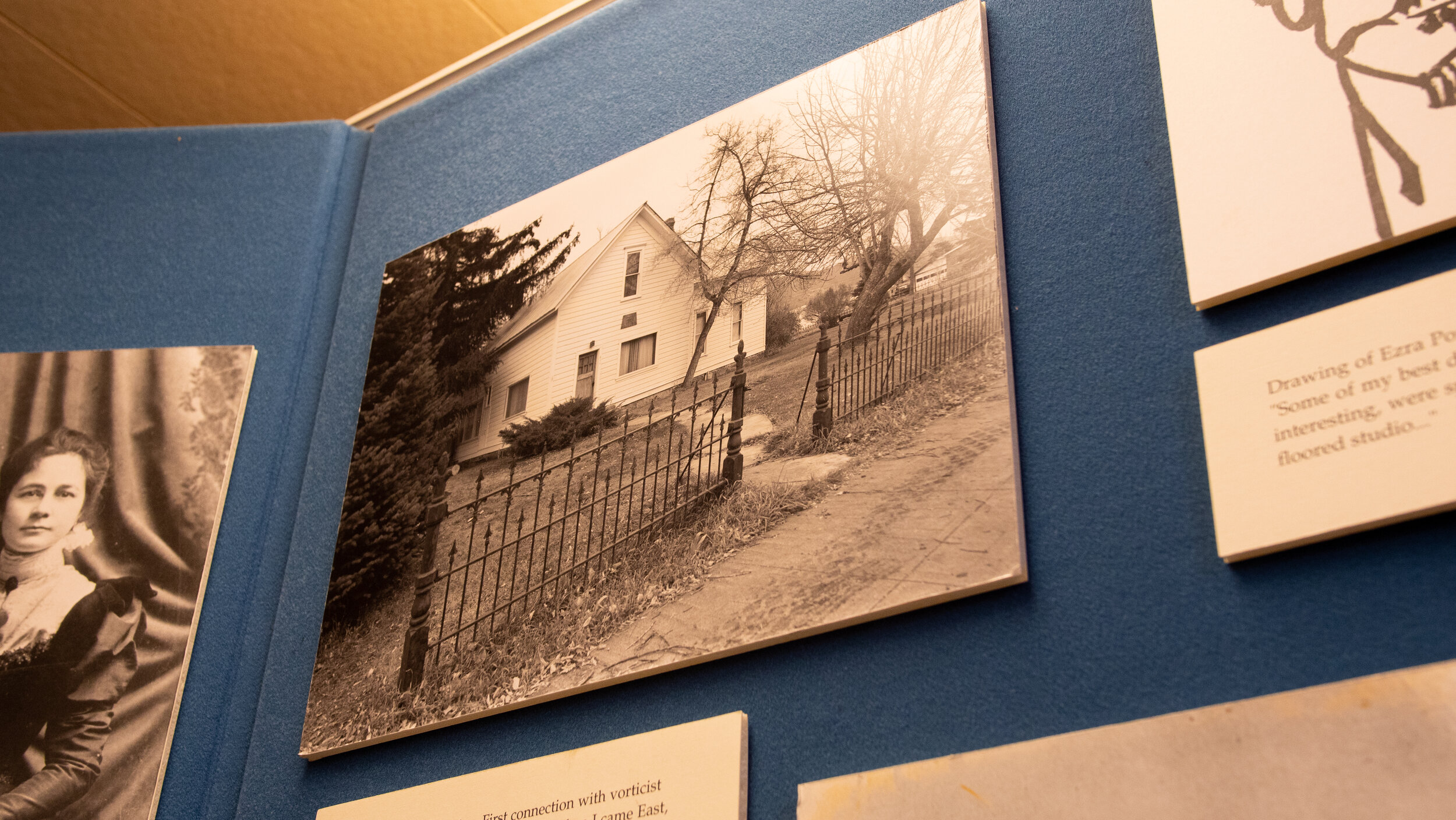
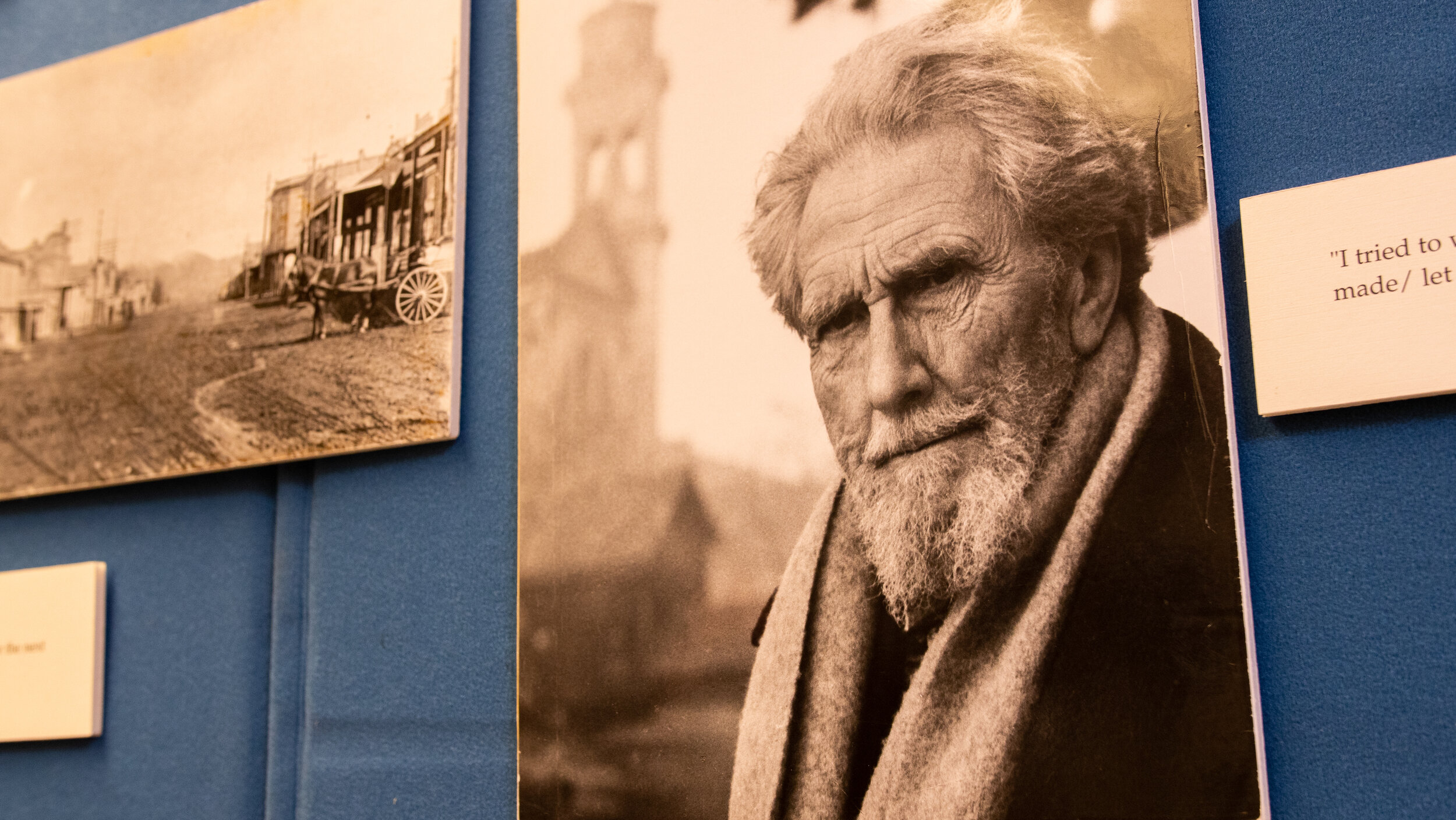

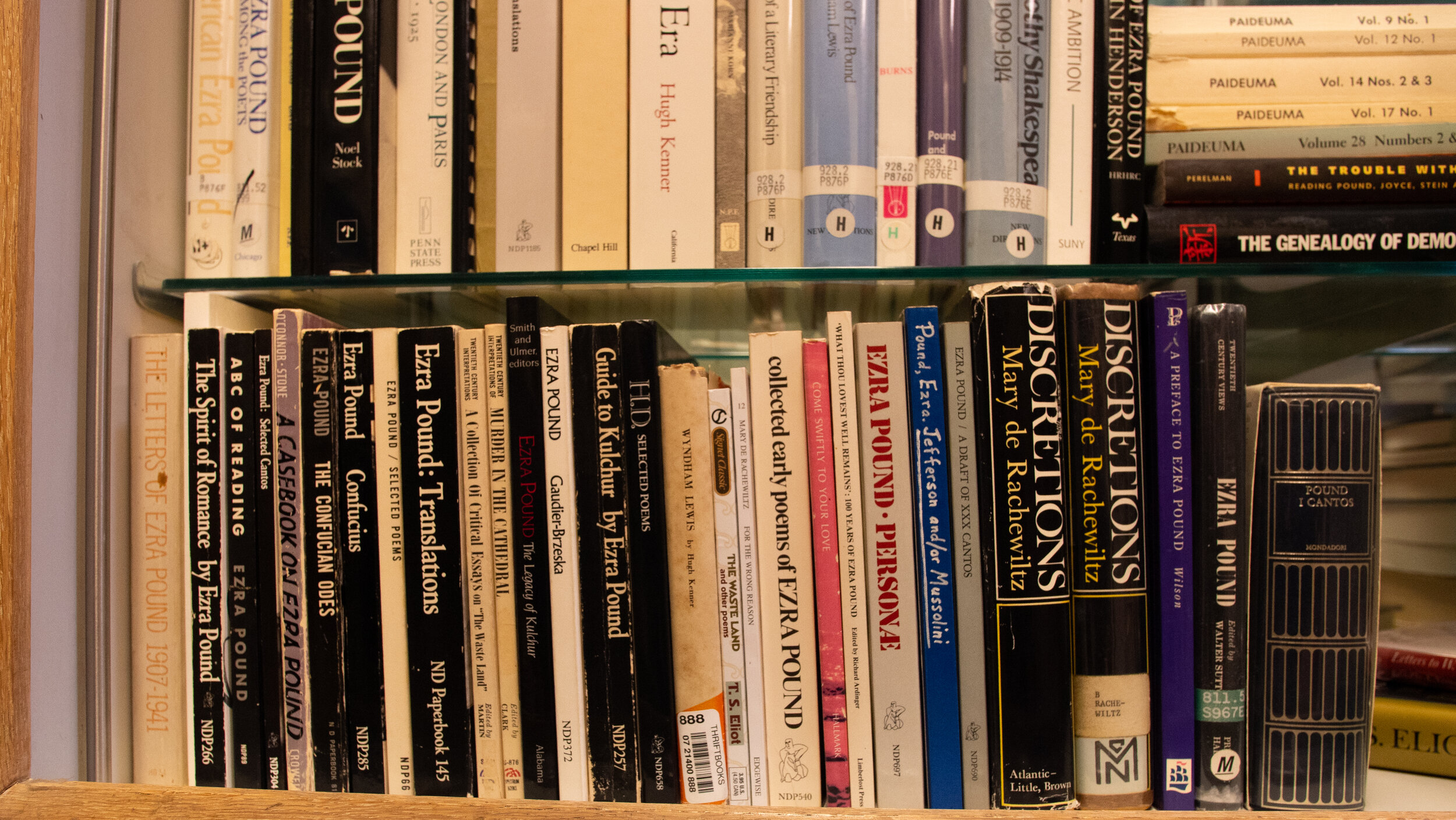
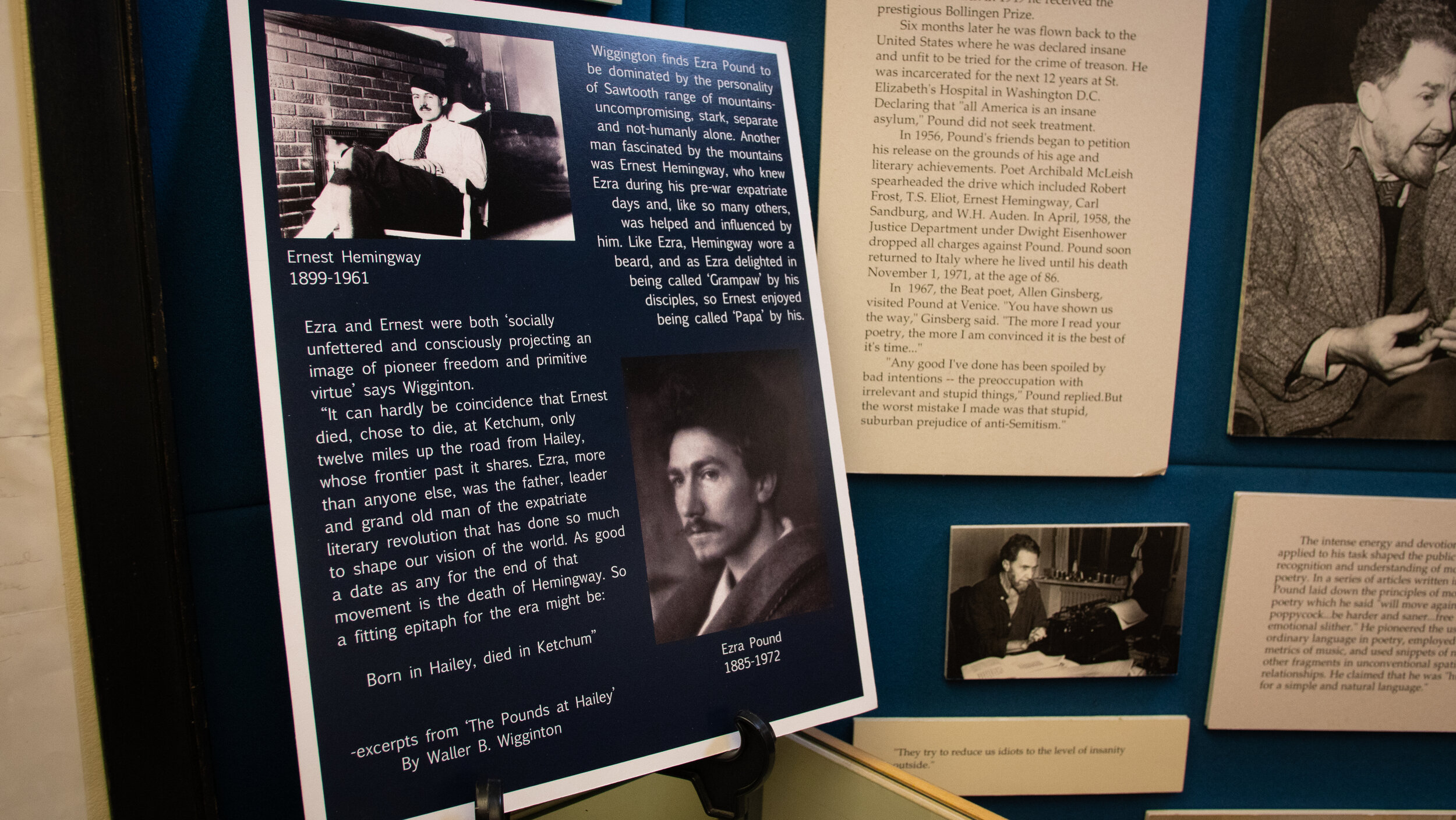
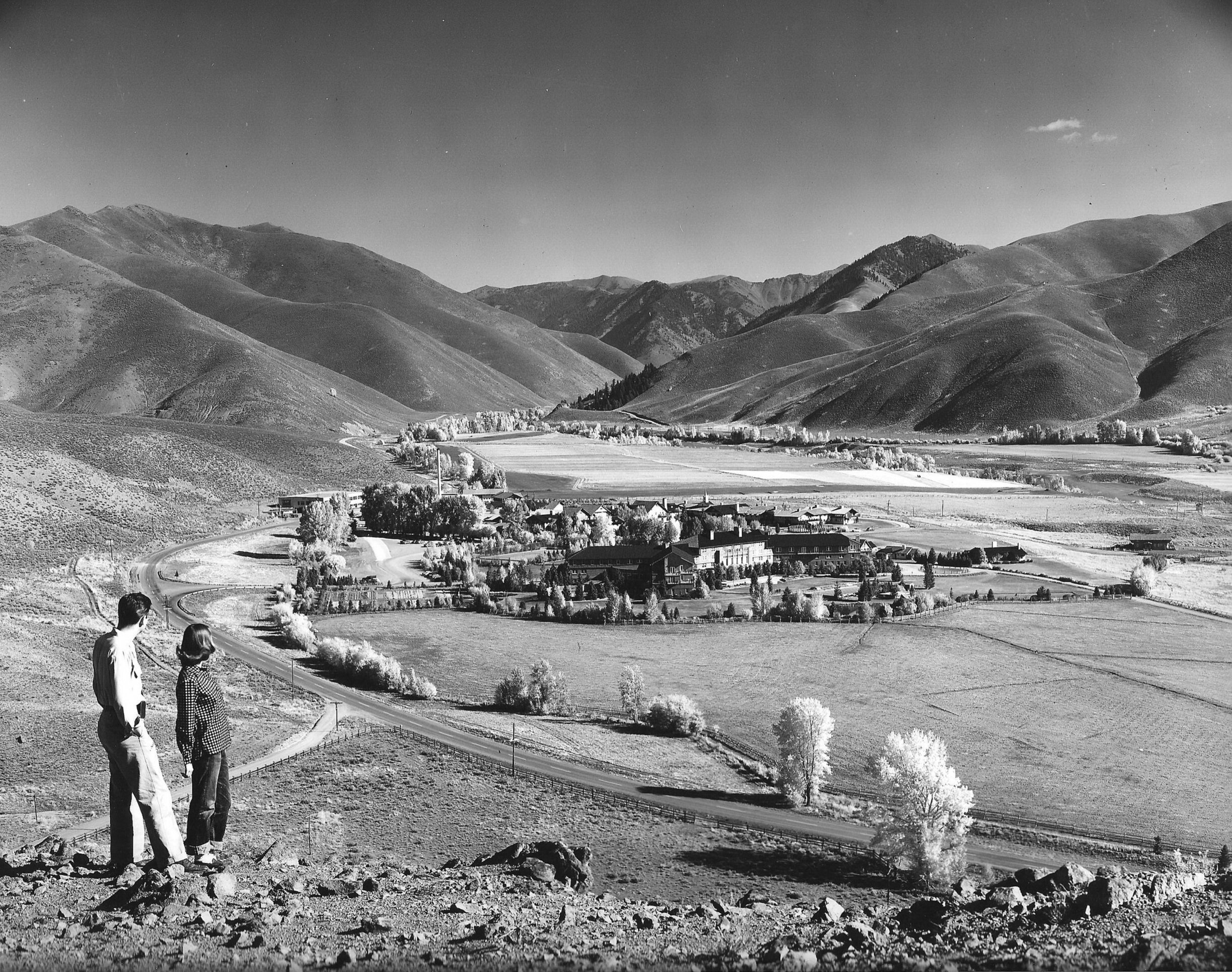
Sun Valley Resort
In 1936, life in the Wood River Valley would change forever. Averell Harriman, chairman of the Union Pacific Railroad, sent Austrian count Felix von Schaffgotsch across the West to find the ideal location for a winter resort.
Count Schaffgotsch nearly abandoned his search until he overheard a Union Pacific railman mention that the train line up to Ketchum, Idaho was their most problematic in the winter, due to the heavy loads of snow. His ears perked at the statement, and he went to see for himself. Making his way up the Wood River Valley in a bizaard, he stayed overnight in Ketchum. Waking up to a snowy wonderland glistening in rays of brilliant sun, he knew that he had found the location of America’s new winter playground.
The Sun Valley Lodge was opened on December 21st, 1936, and boasted the tag line “Winter sports under a summer sun”. The resort attracted many Hollywood celebrities, including Gary Cooper, Lucille Ball, Clark Gable, Marilyn Monroe, and the Kennedy family.
When World War II broke out in the 1940s, the Sun Valley lodge was used as a Naval convalescent hospital for returning soldiers needing physical and mental rehabilitation. The BCHM has on display a hand-painted box, painted in an art therapy program by a soldier recovering at the Sun Valley Lodge in 1947.



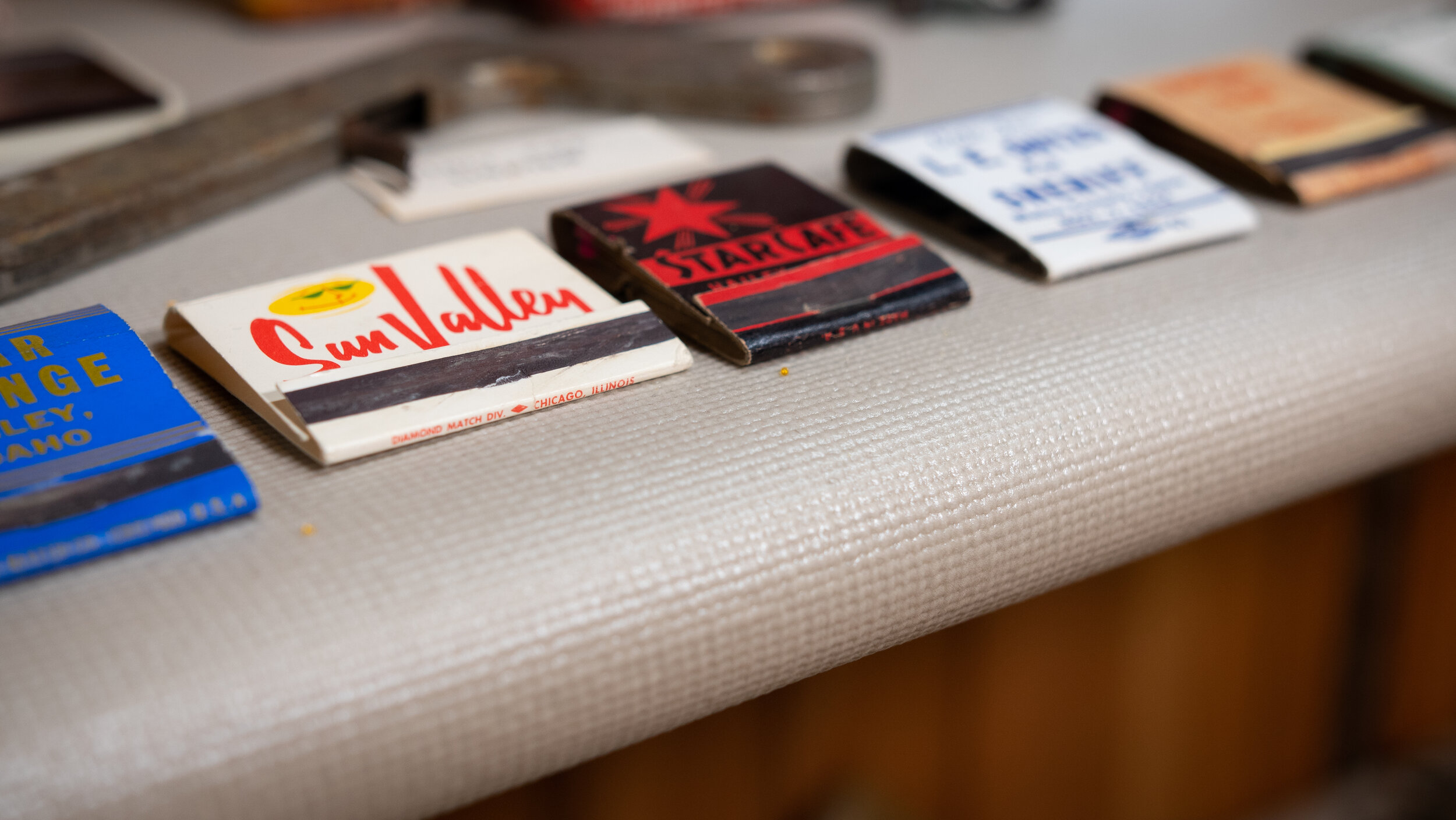
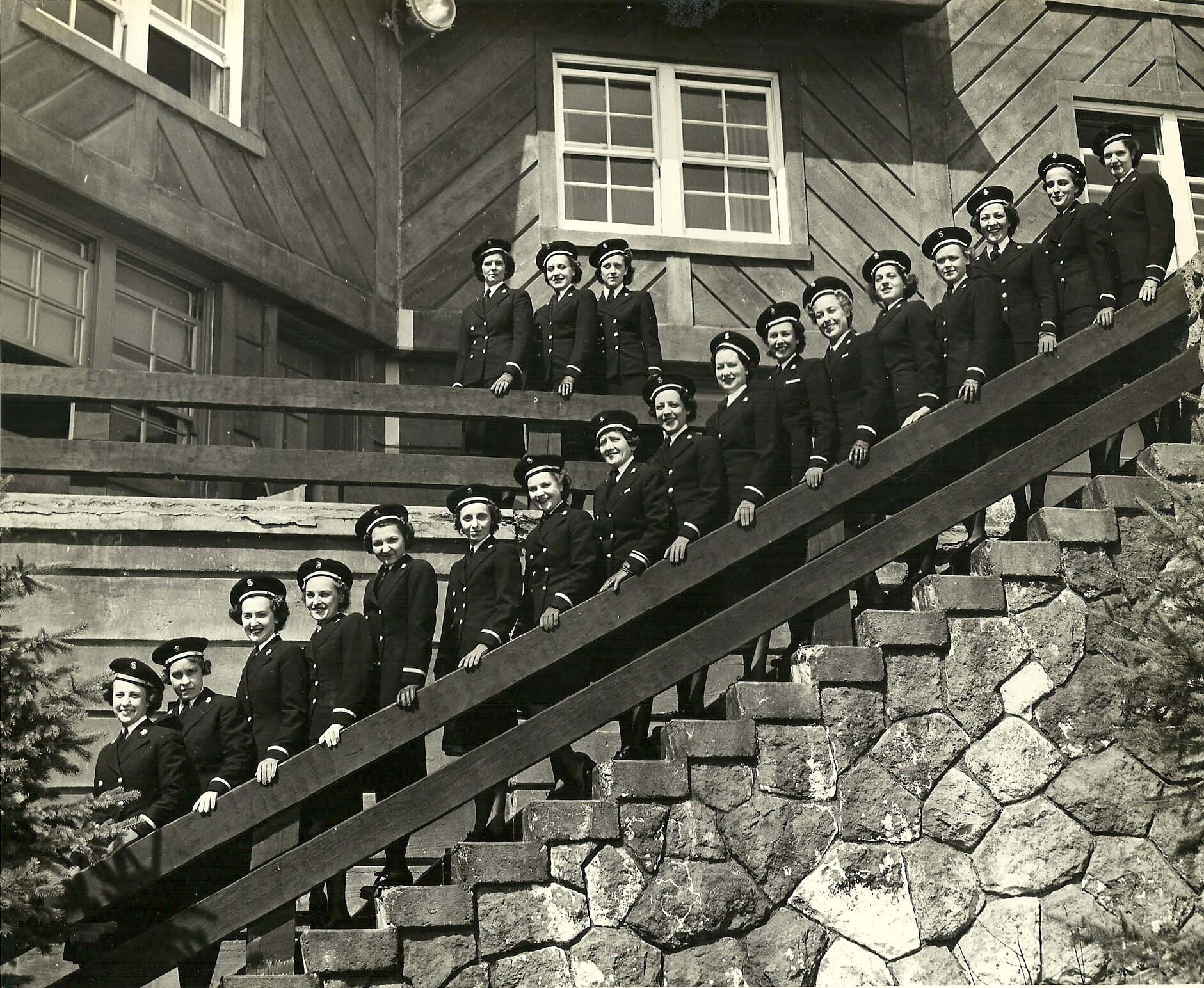
Naval Hospital Nurses at Sun Valley Lodge 1946
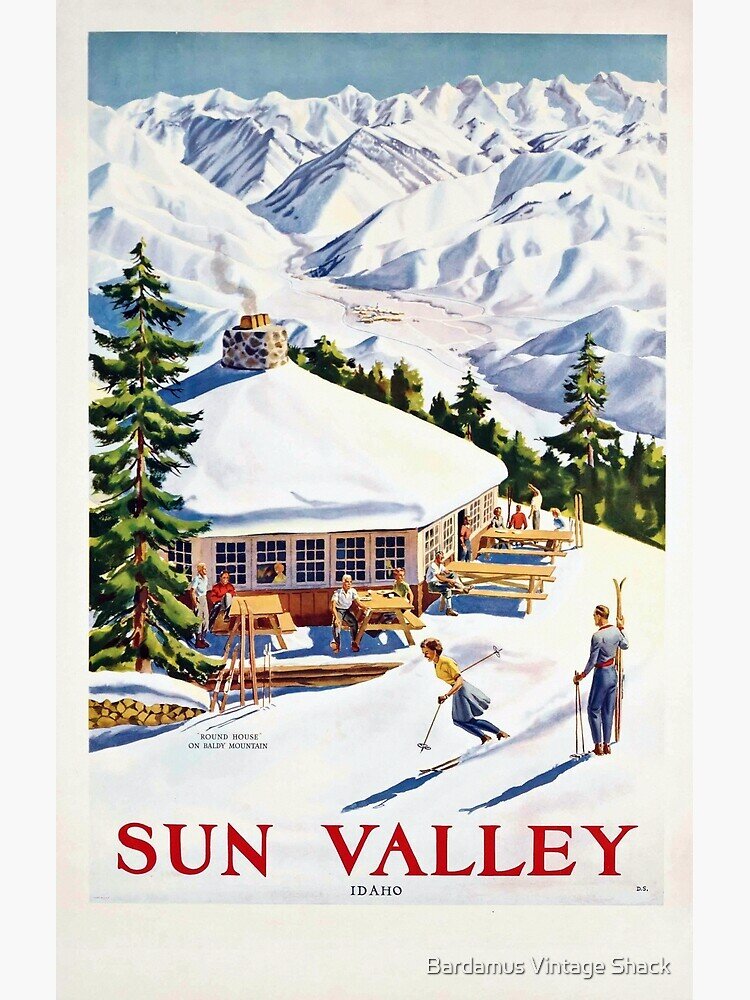
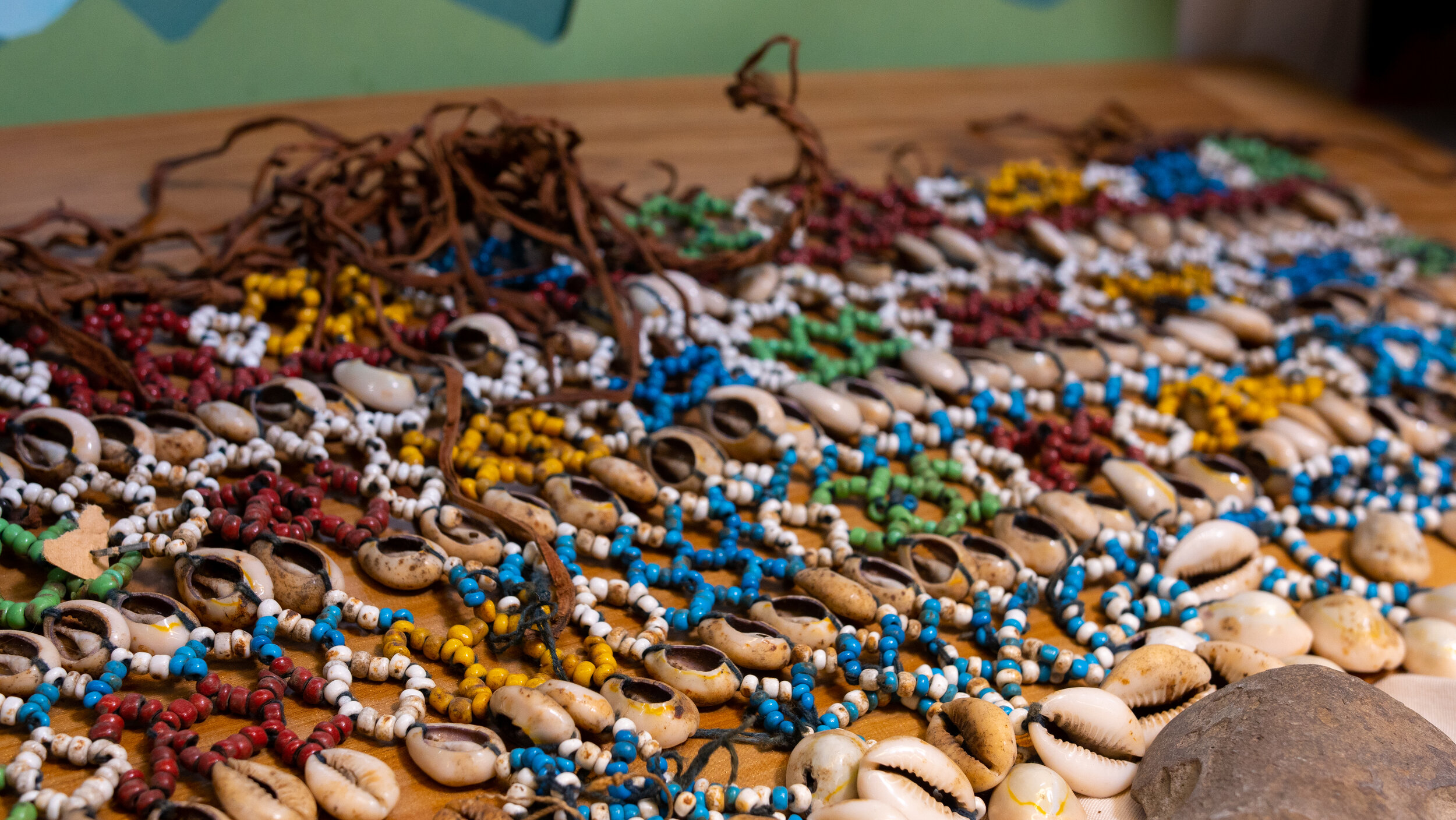
Native American
Prior to Anglo-American settlement, Native Americans had hunted, fished, and lived in the valleys and plains of south central Idaho for thousands of years.
Archaeological evidence from both the Redfish Overhang and digs at Elkhorn prove human habitation for more than 10,000 years.
Shoshone (Sheepeater) and Bannock tribes hunted deer, antelope, mountain sheep, bears and other small game. They depended on the Salmon runs which flowed in the streams north of the valley, and the camas bulb flourishing in the Camas Prairie. They migrated as needed across the area usually heading south when the harsh winter snows arrived.
-information sourced from “A History of Indians in the Sun Valley Area” by Tony Evans
In the museum’s Native American collection are items from the Elkhorn dig, items from Indian Creek, arrow heads and Clovis points from across the west. Also on display are Mammoth fossils from an unknown source which we speculate are from eastern Idaho and the Owl Cave area.
Old Indian trails abound in the area and are detailed in an 1881 Rand McNally Wood River and Sawtooth Mine map.
Native Americans from Fort Hall participating in the Fourth of July Parade in Hailey, Idaho in 1938.

